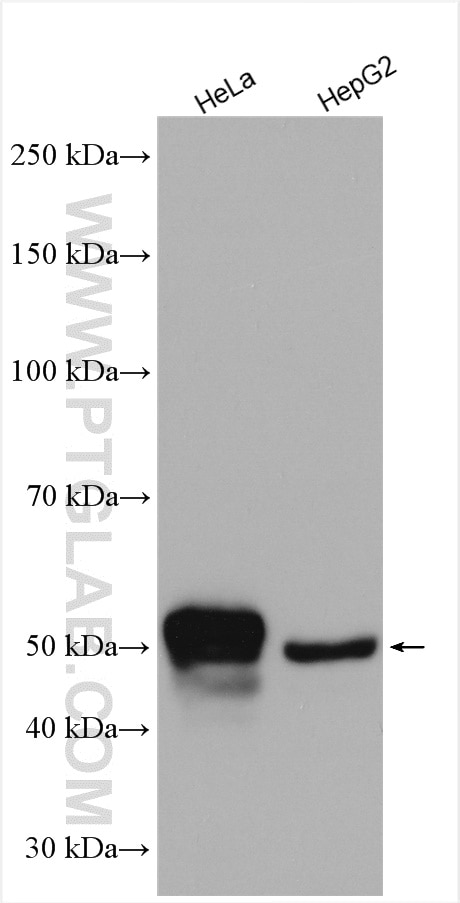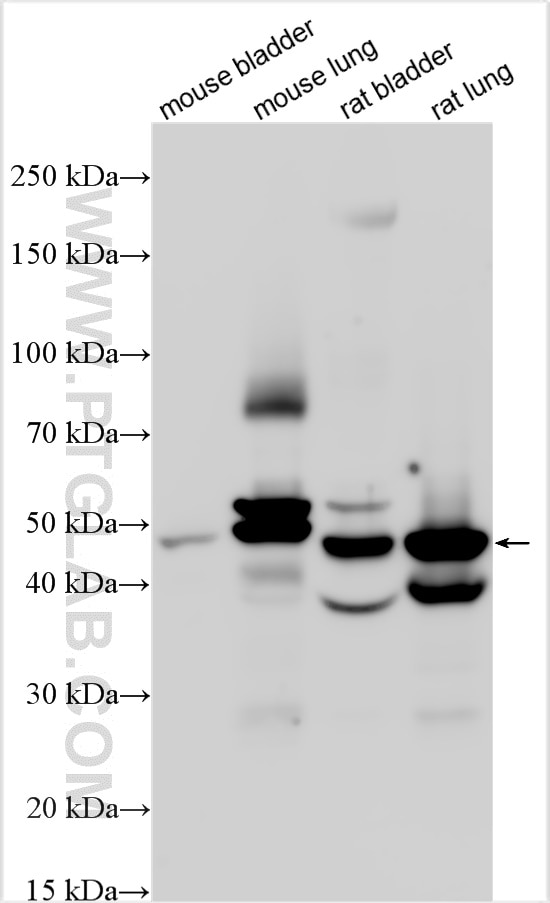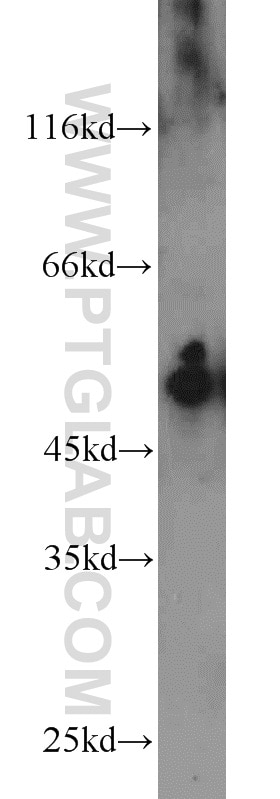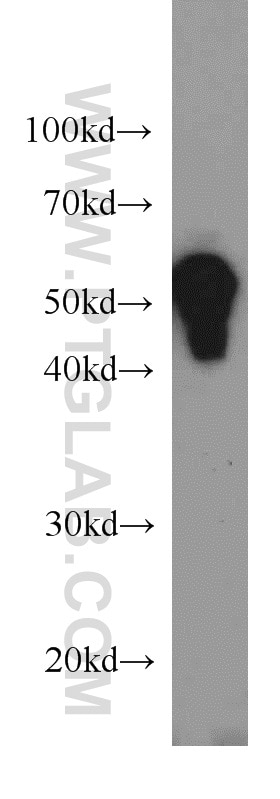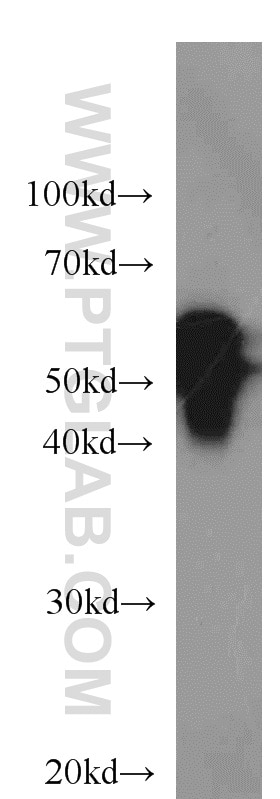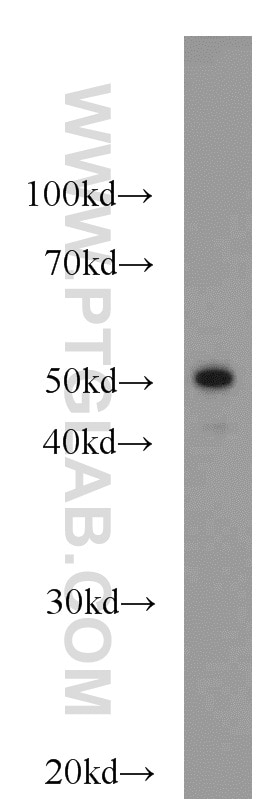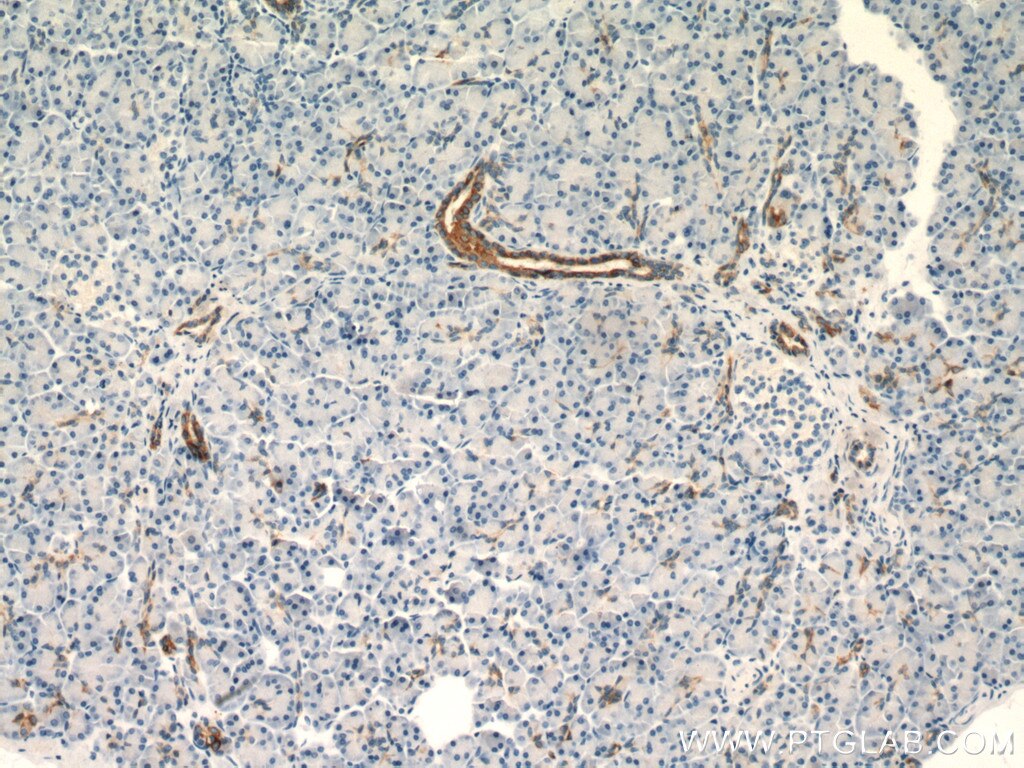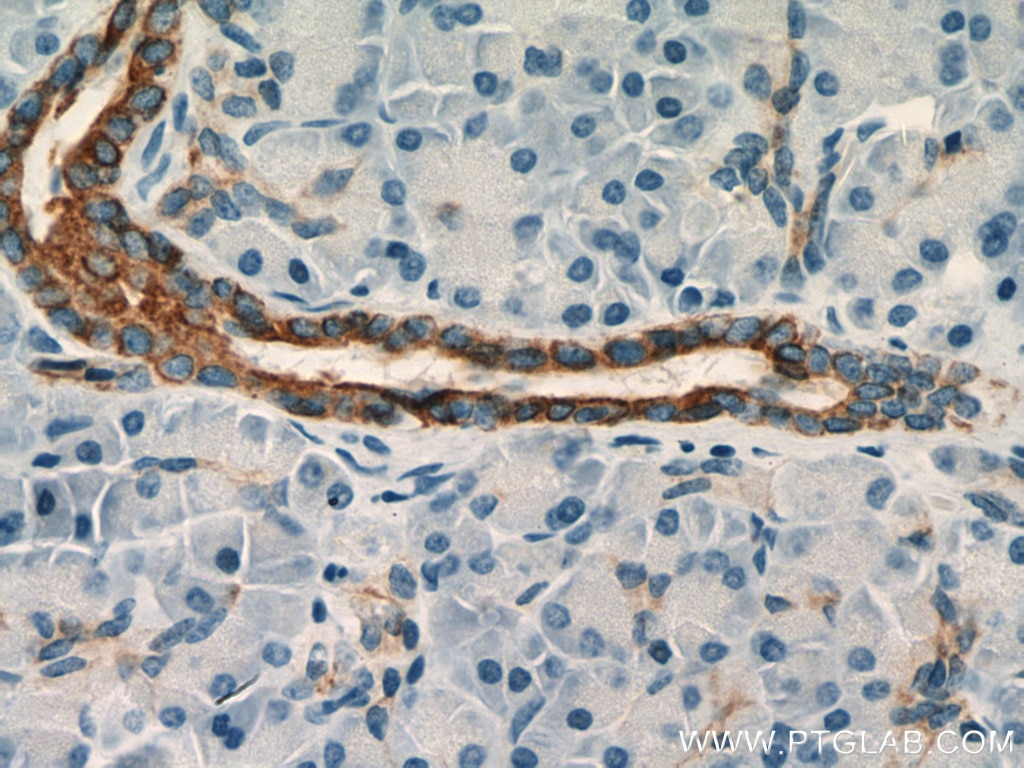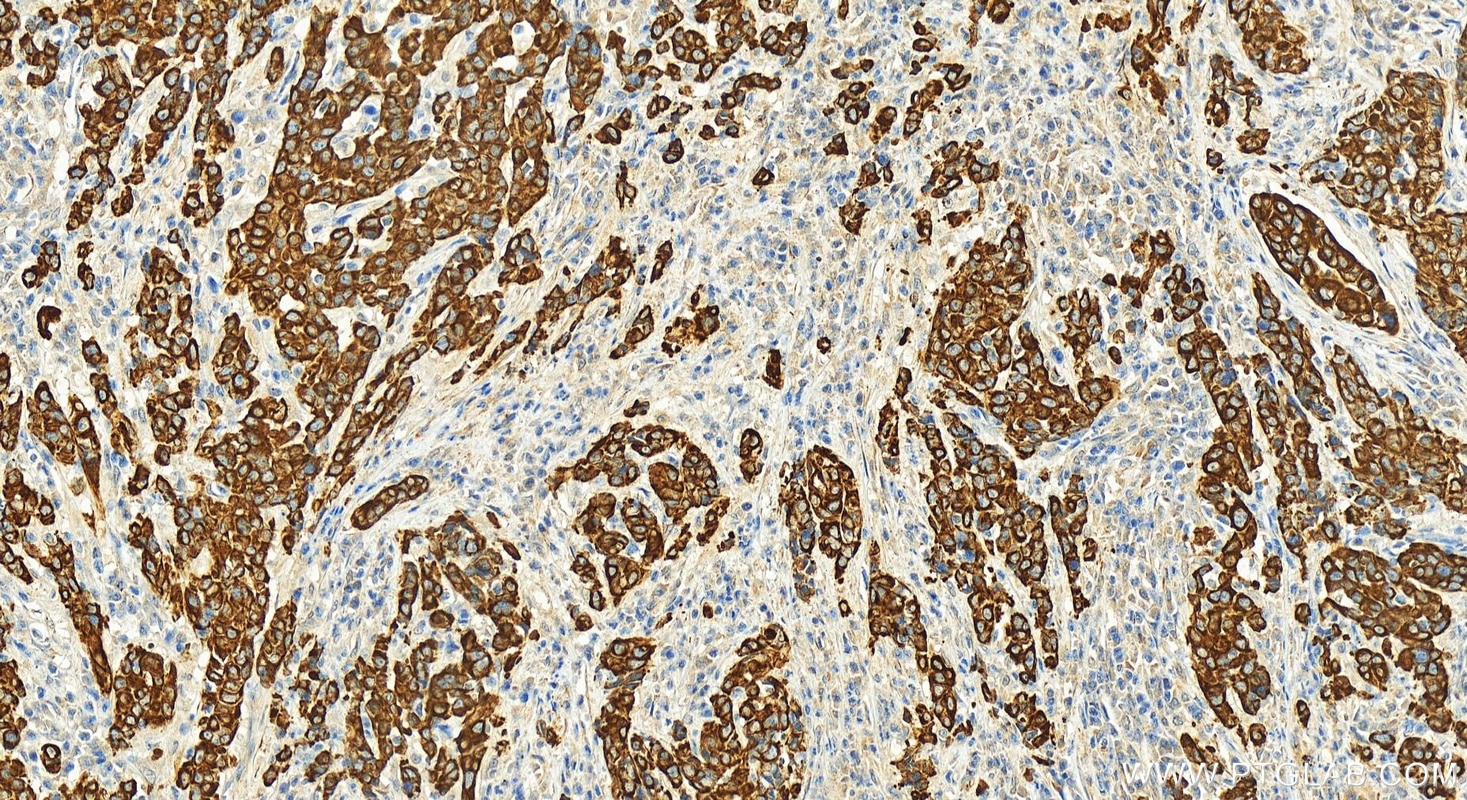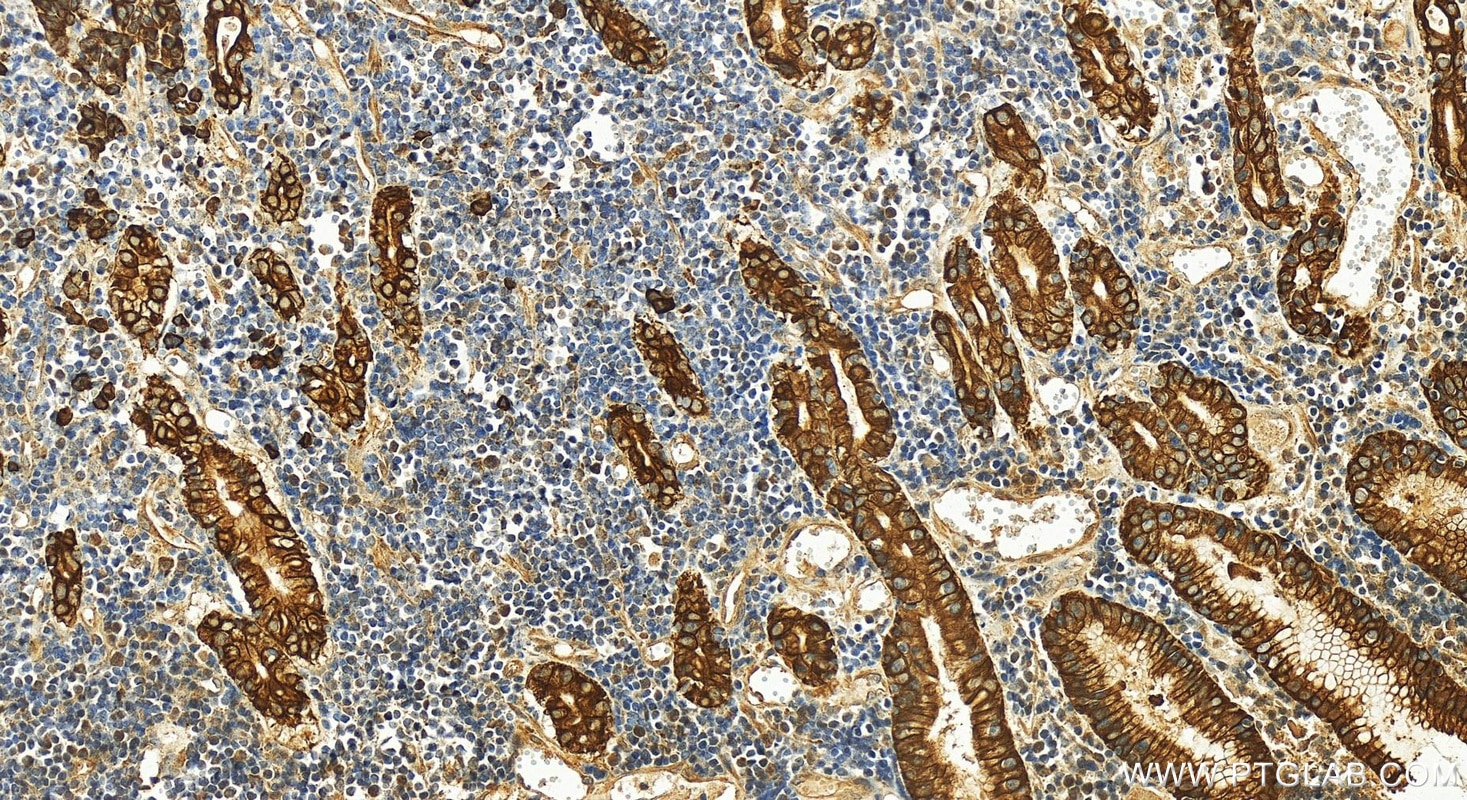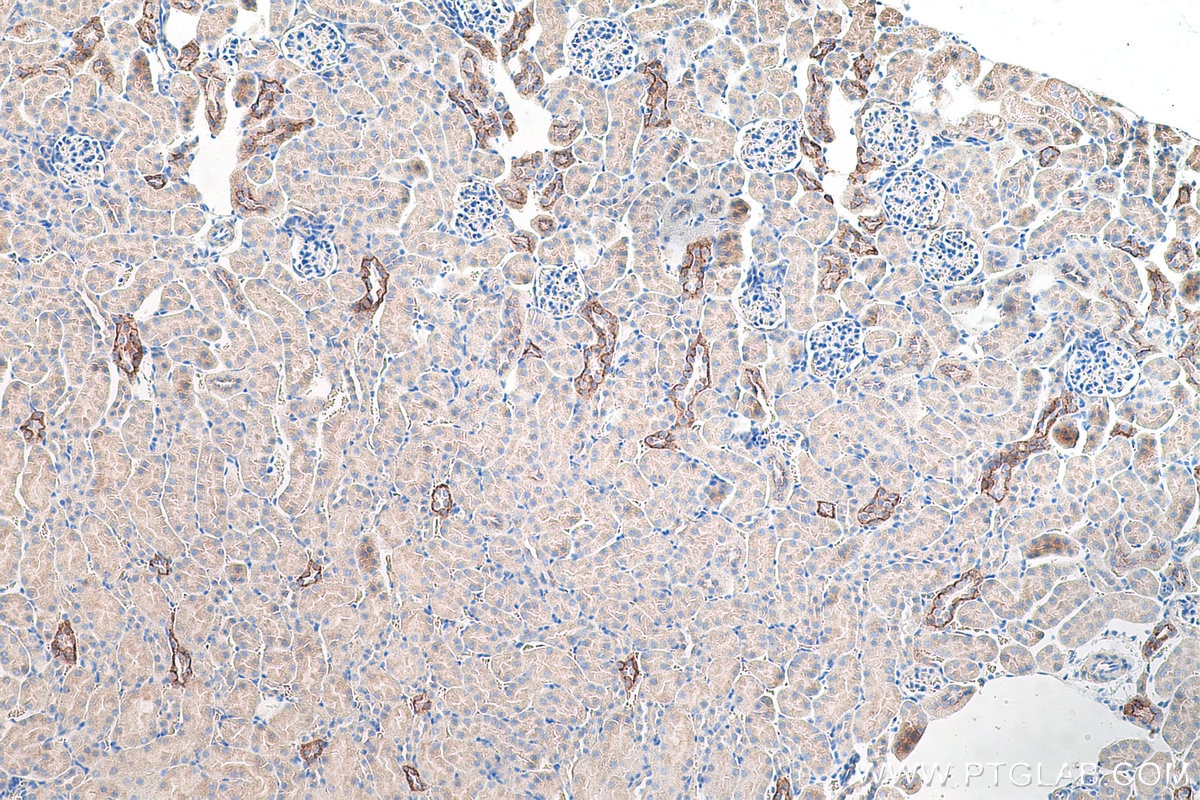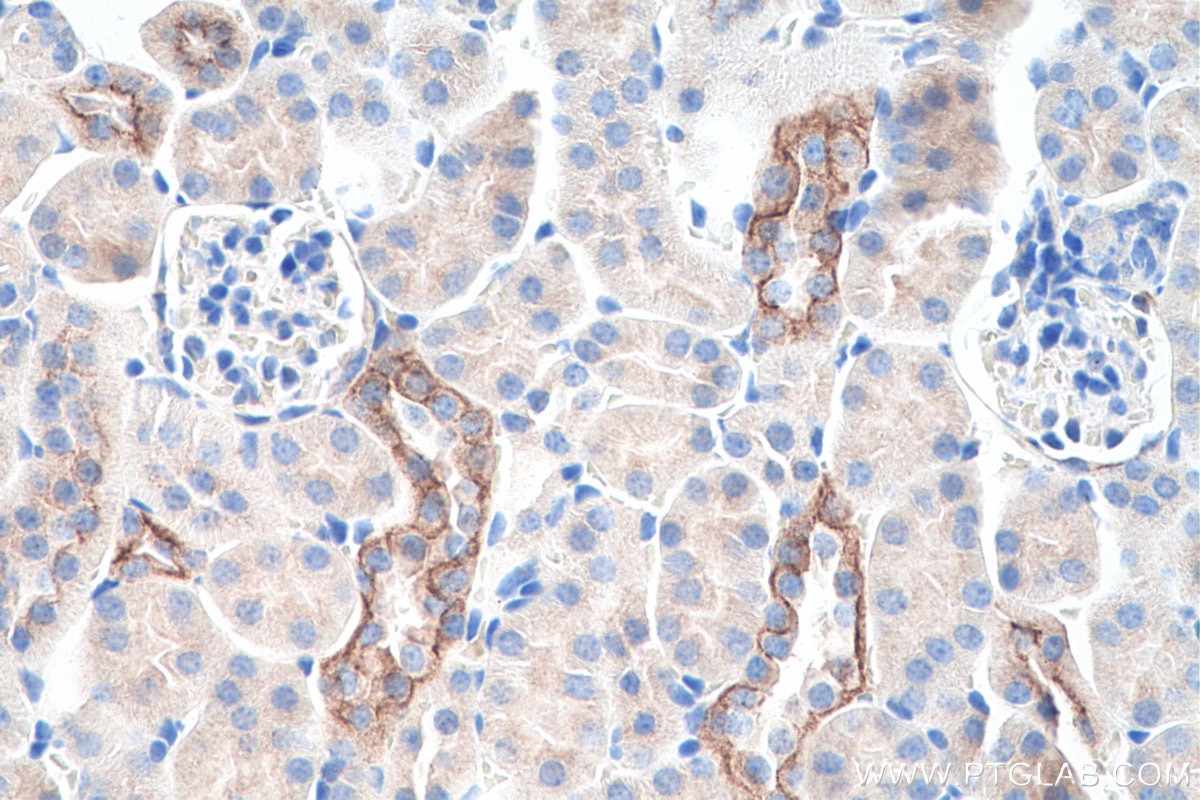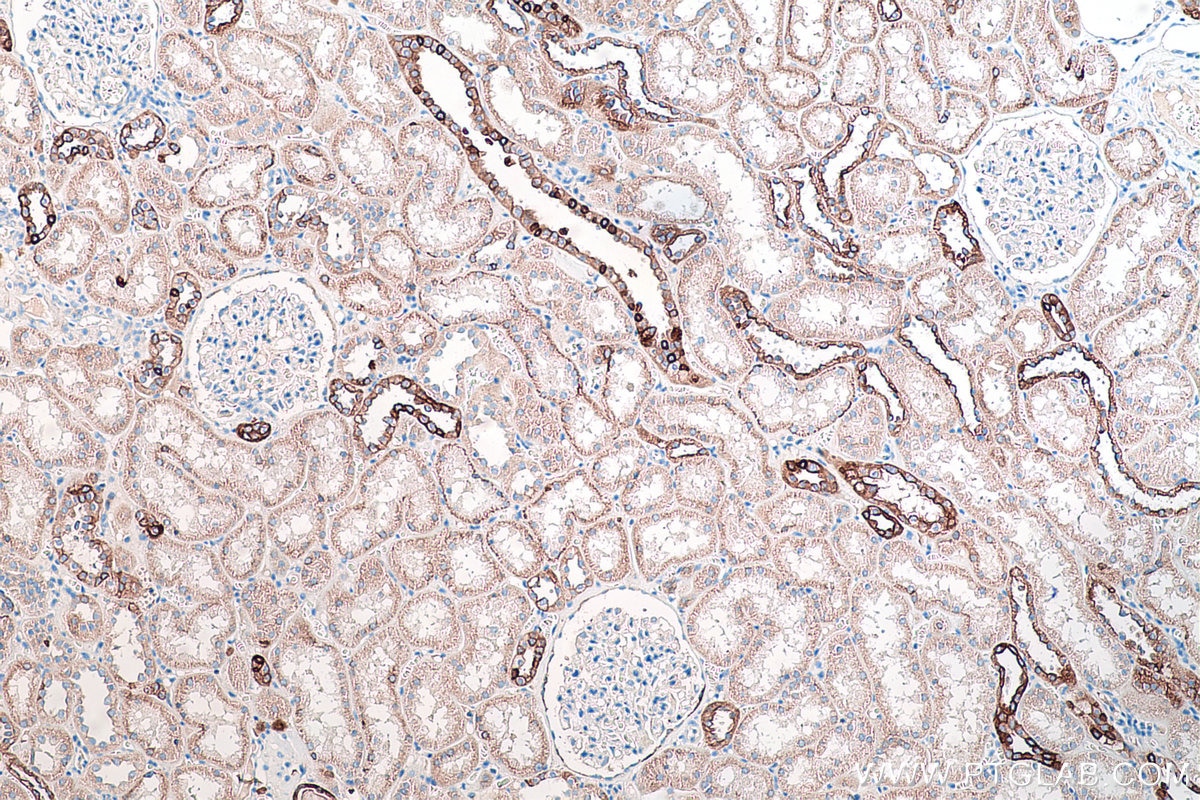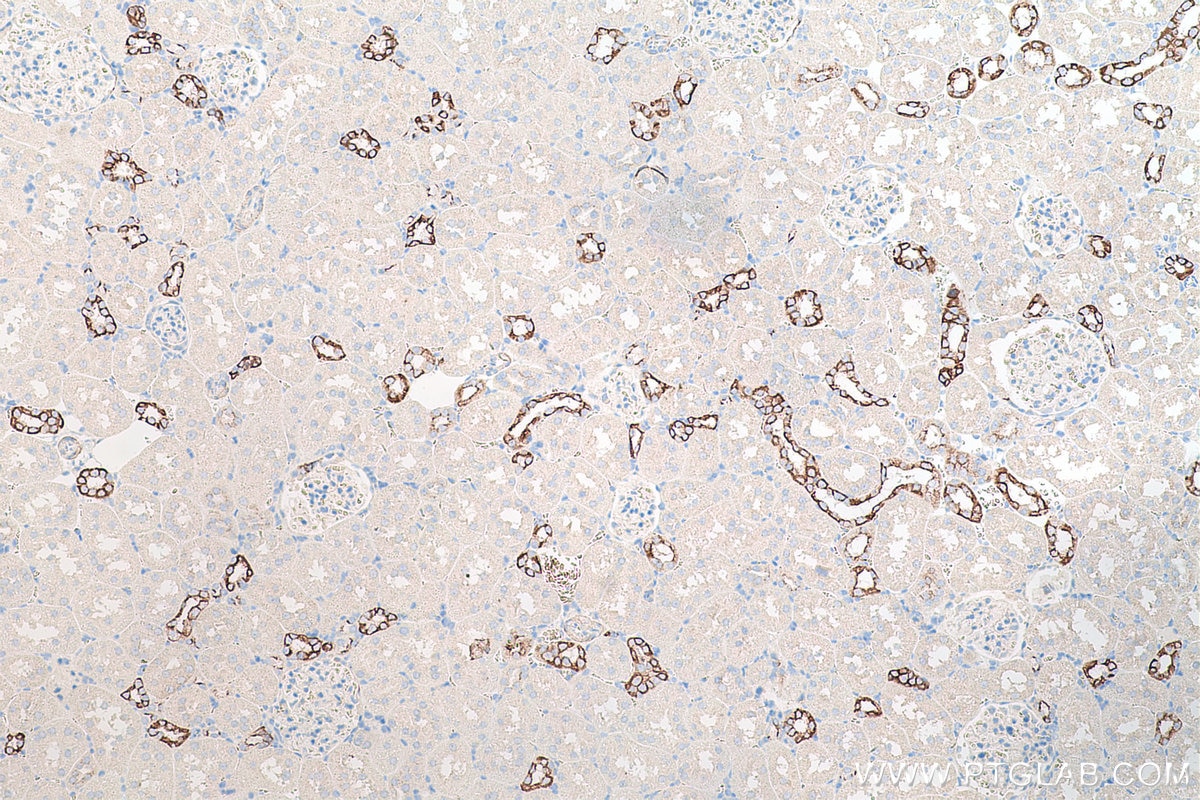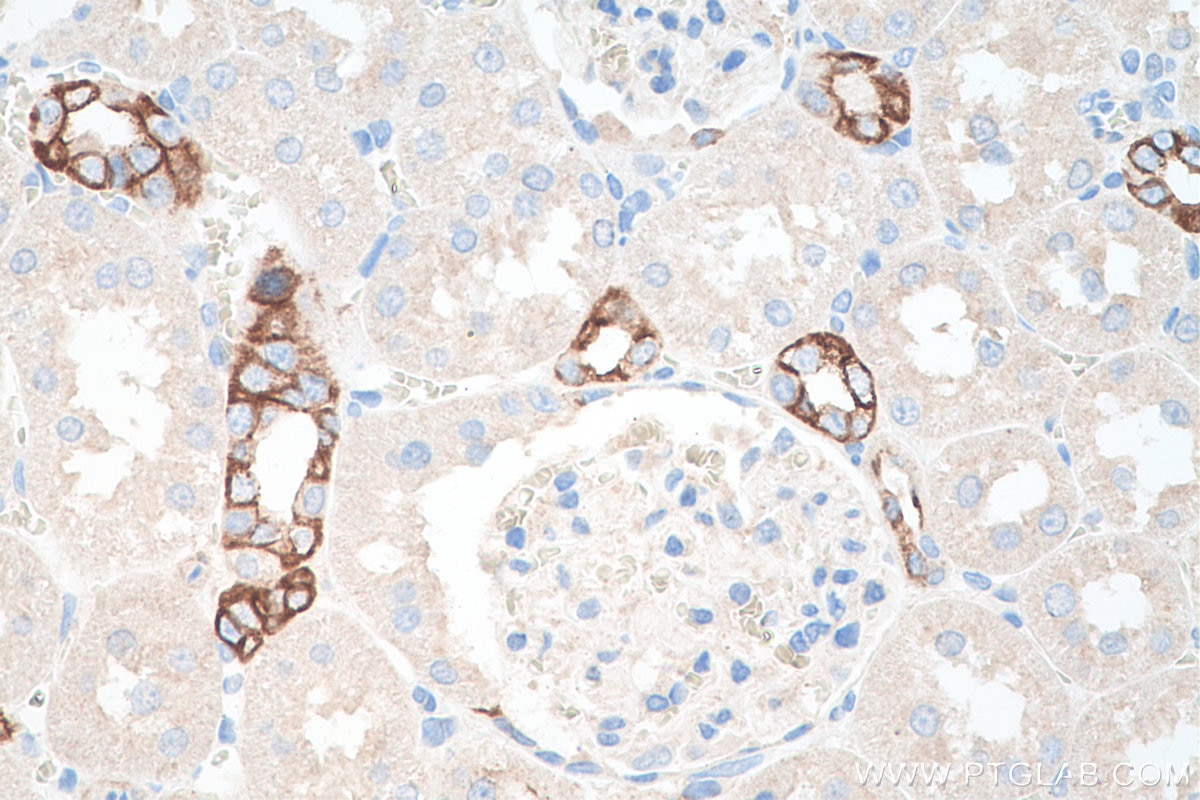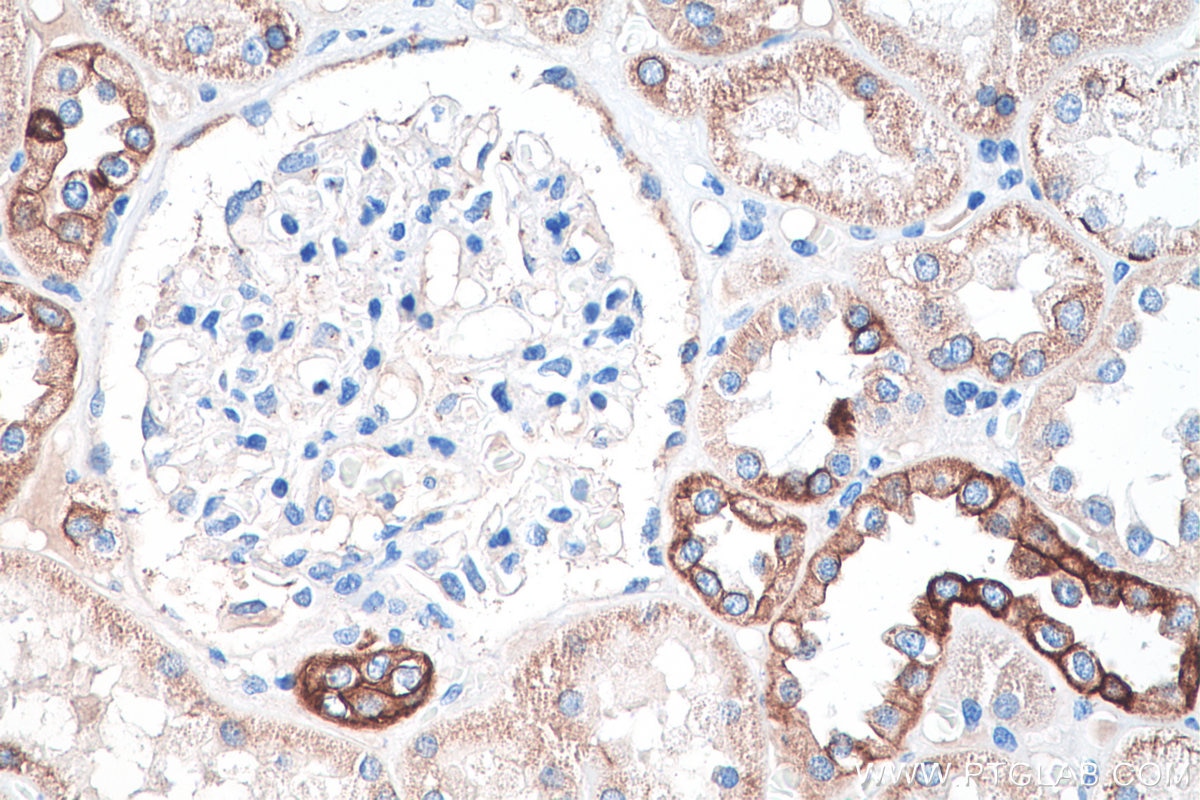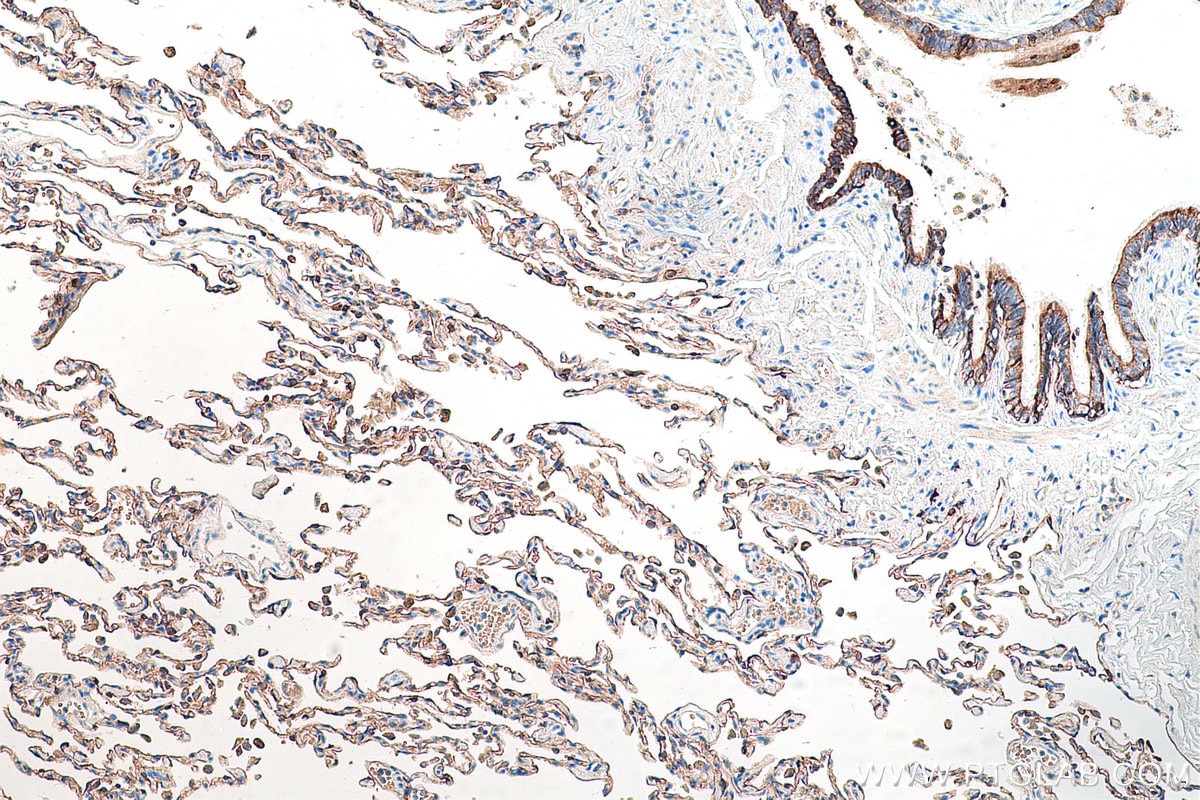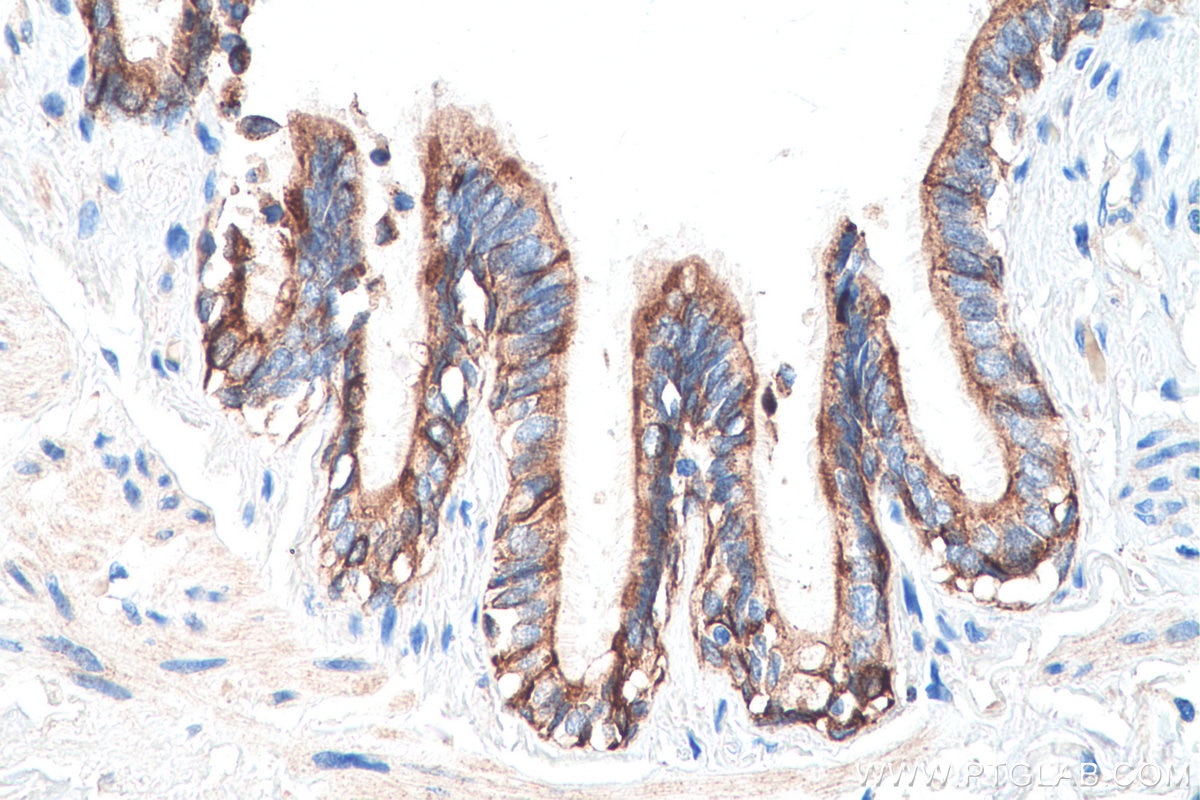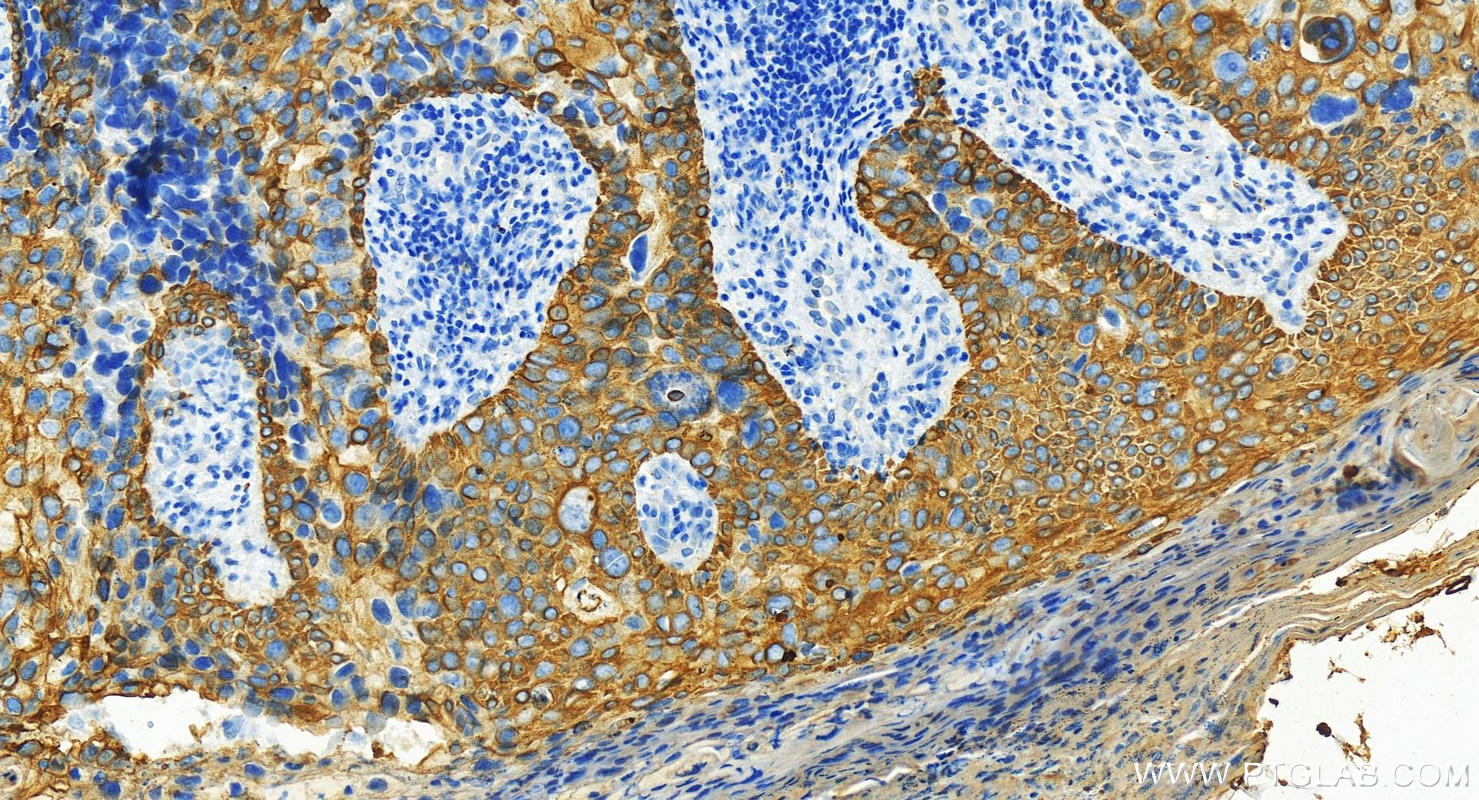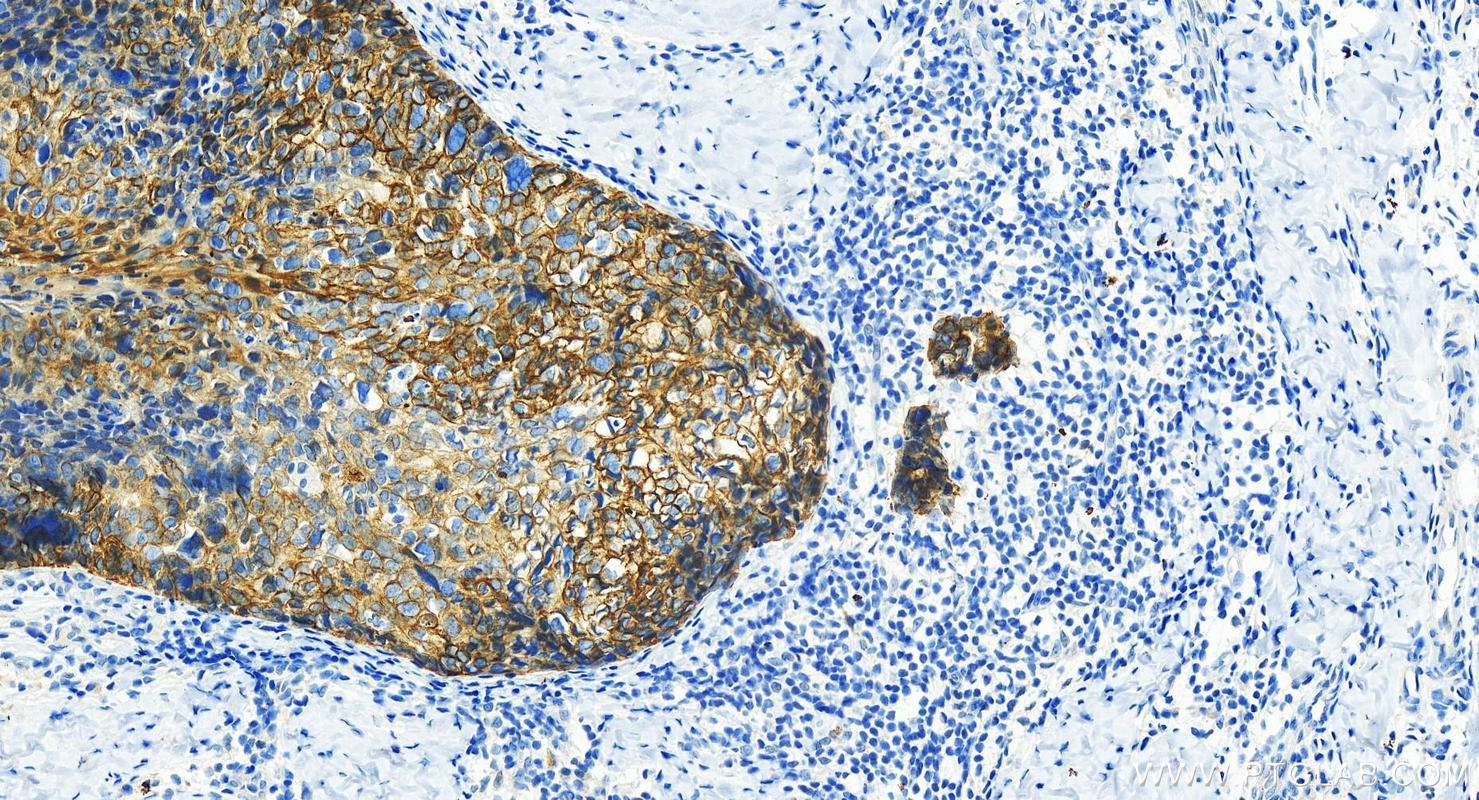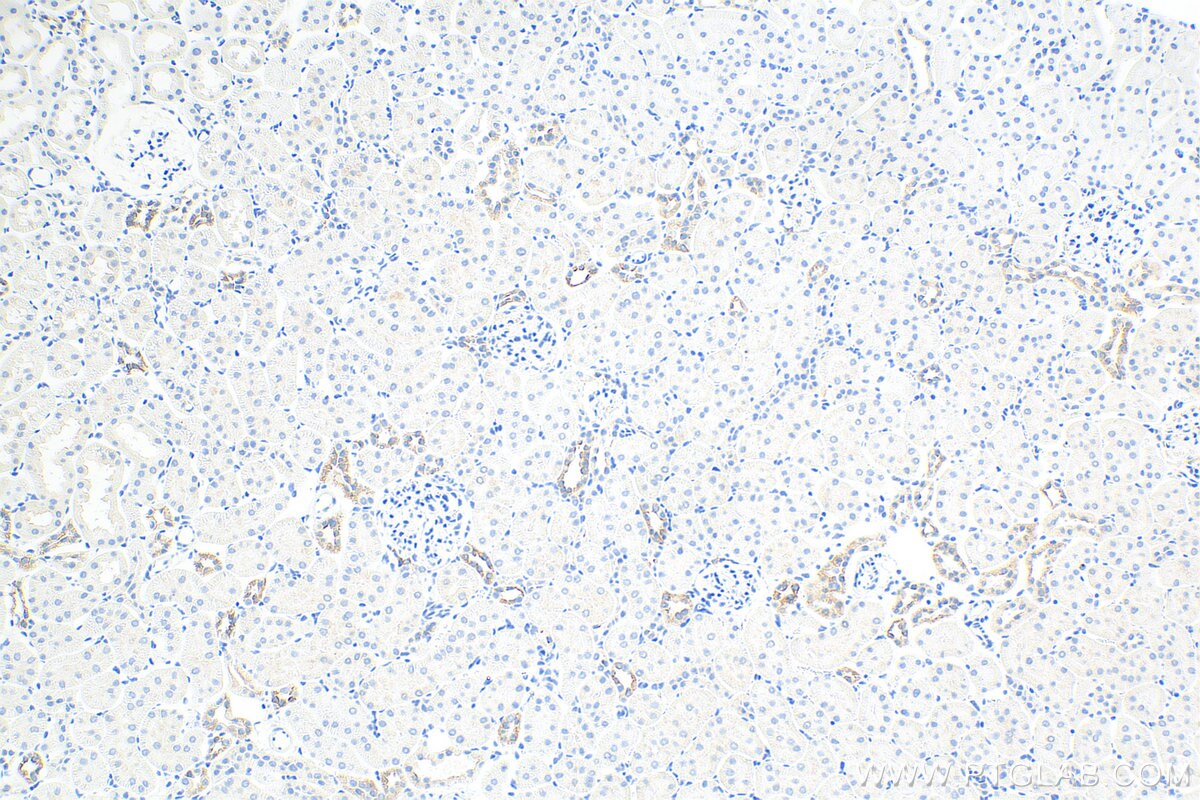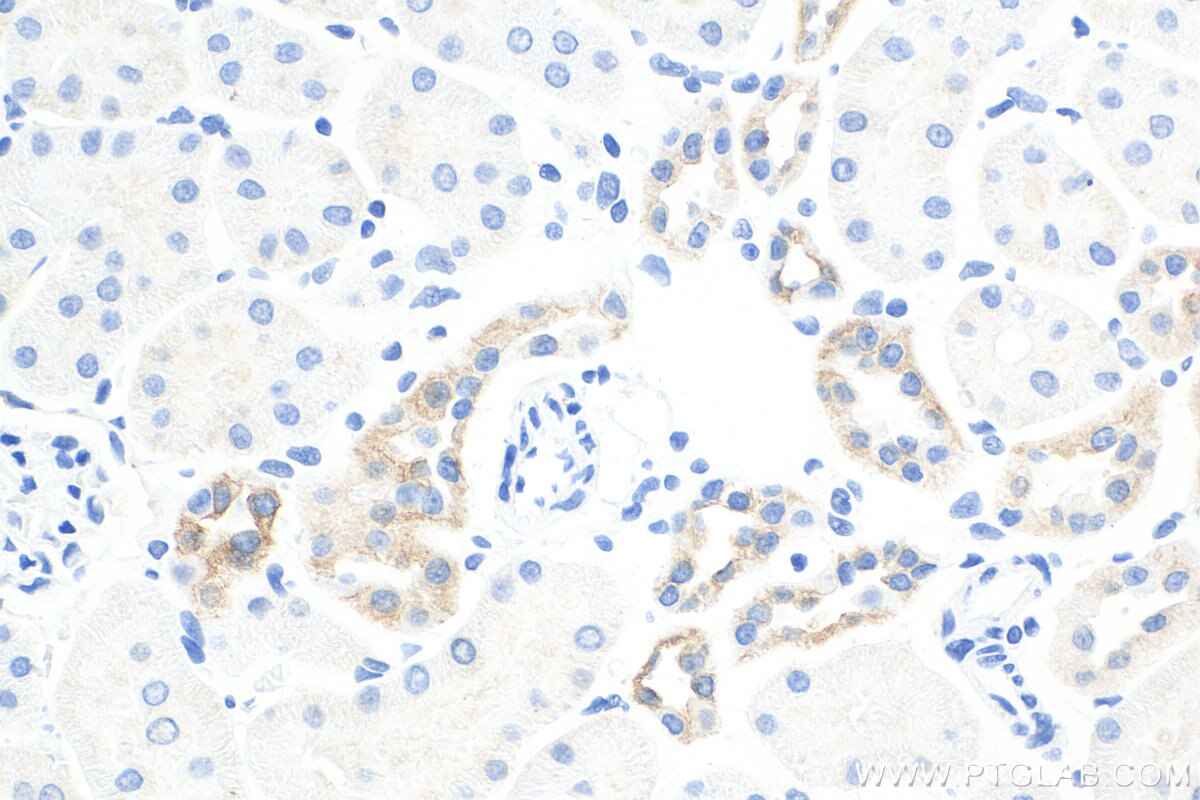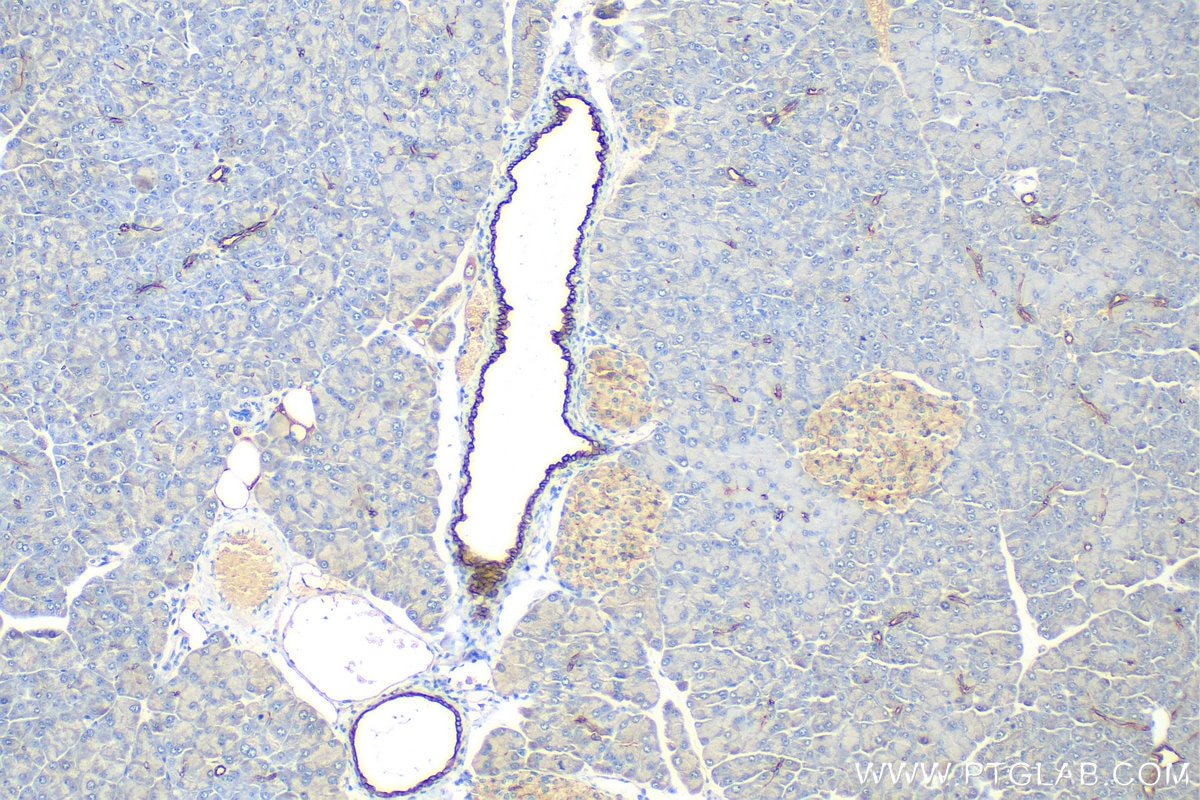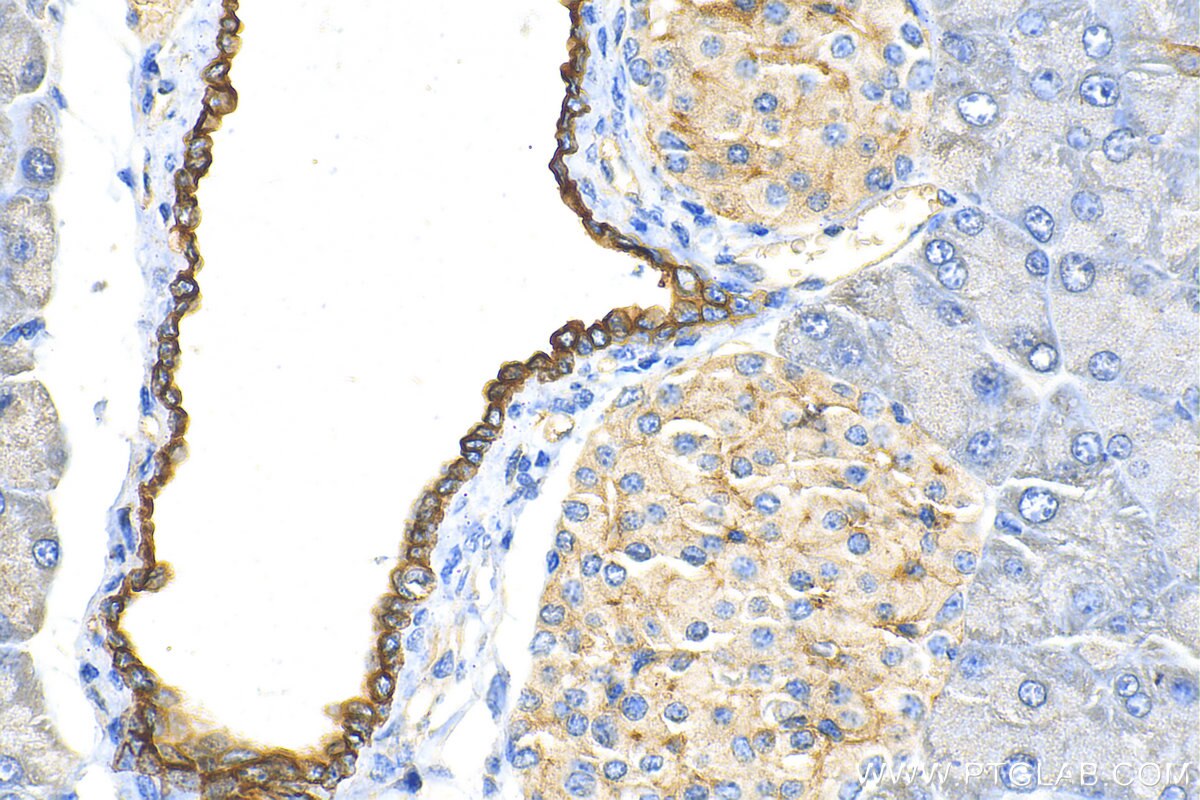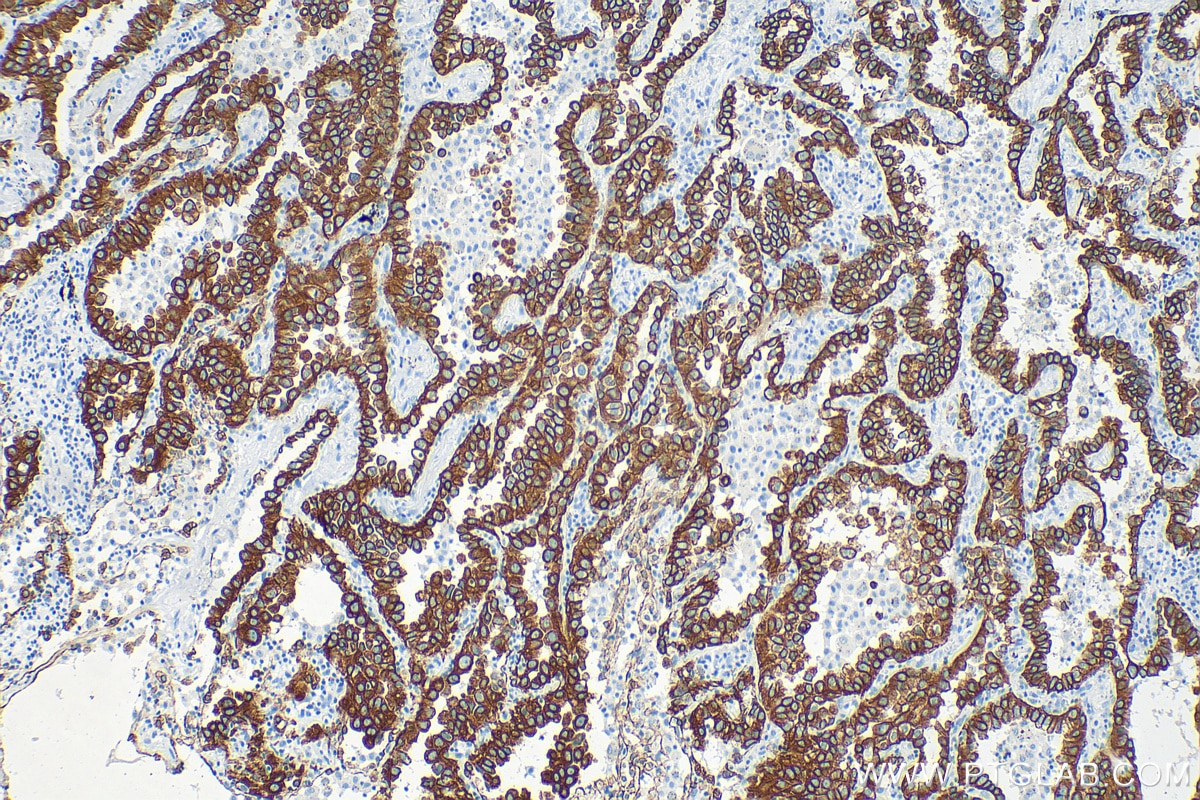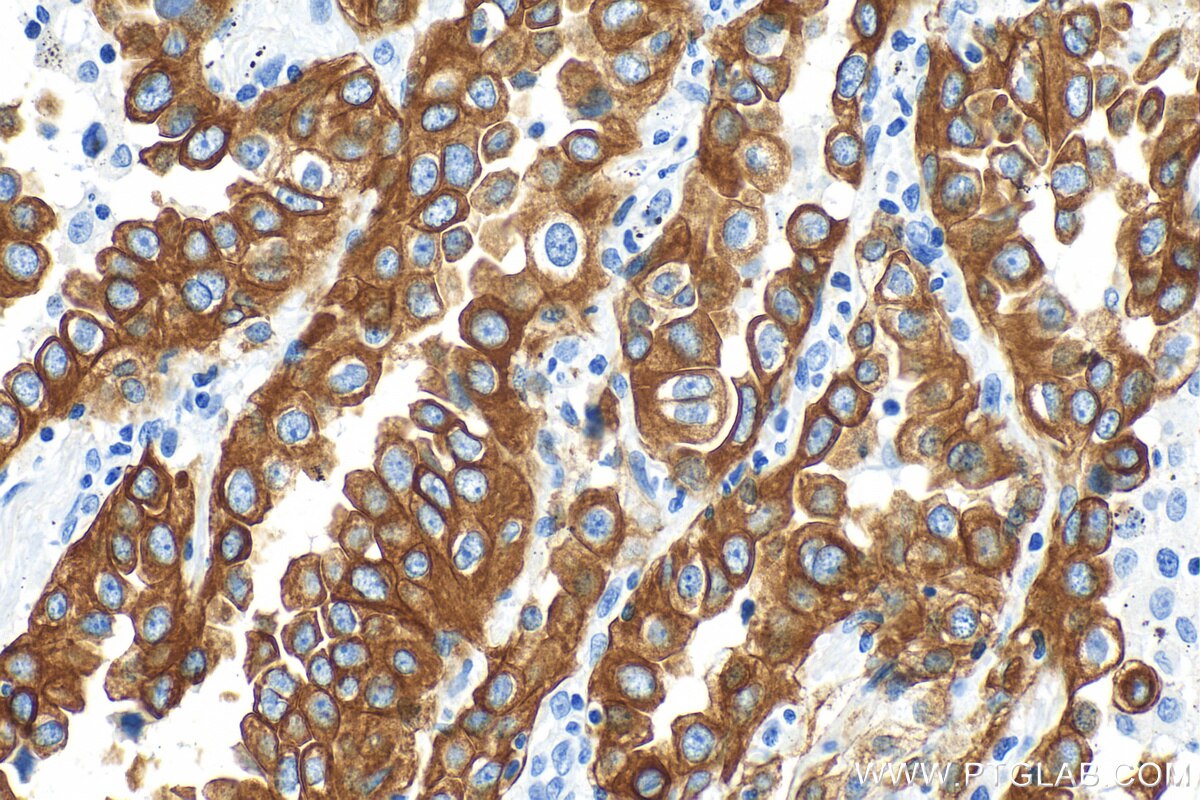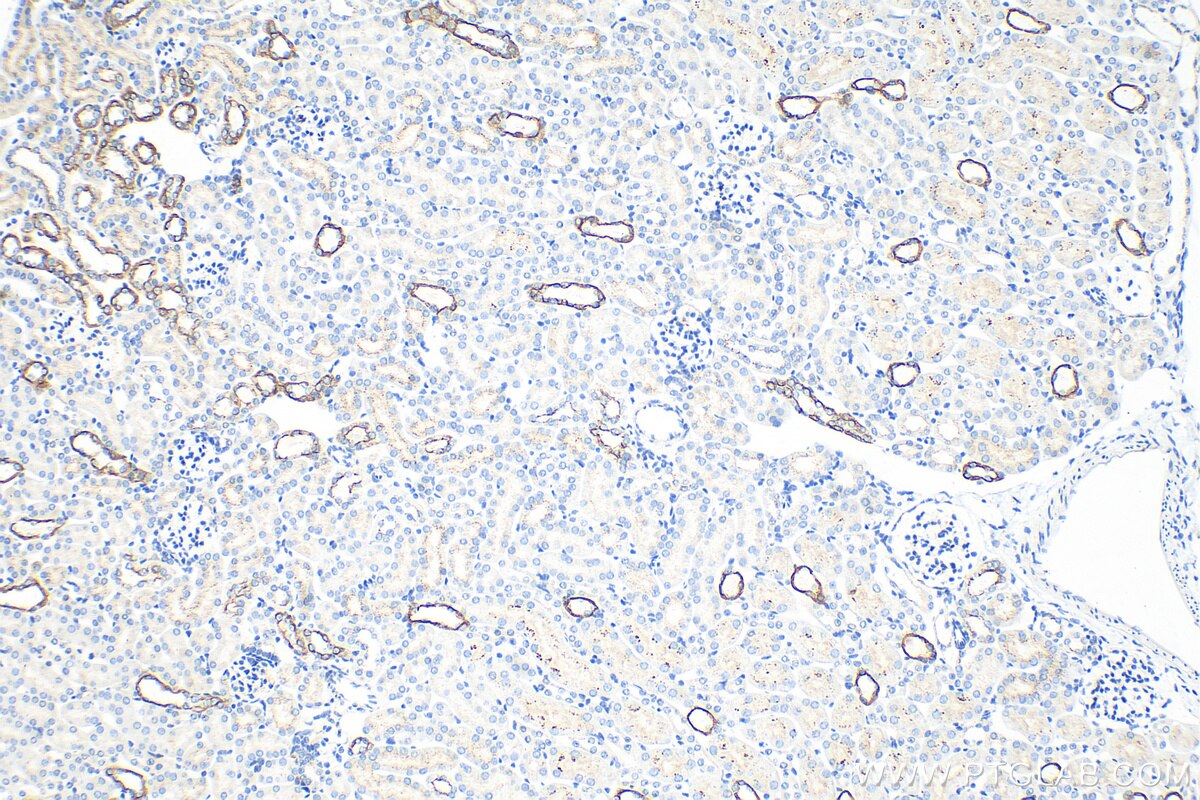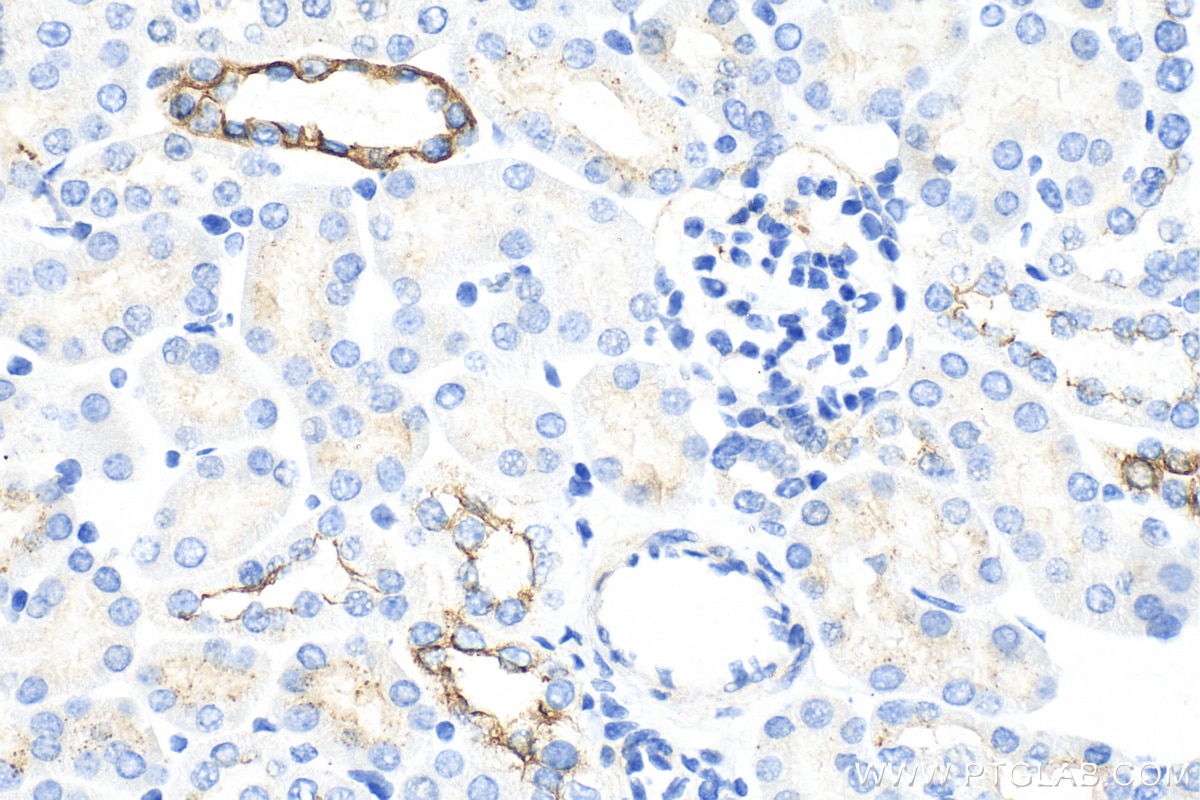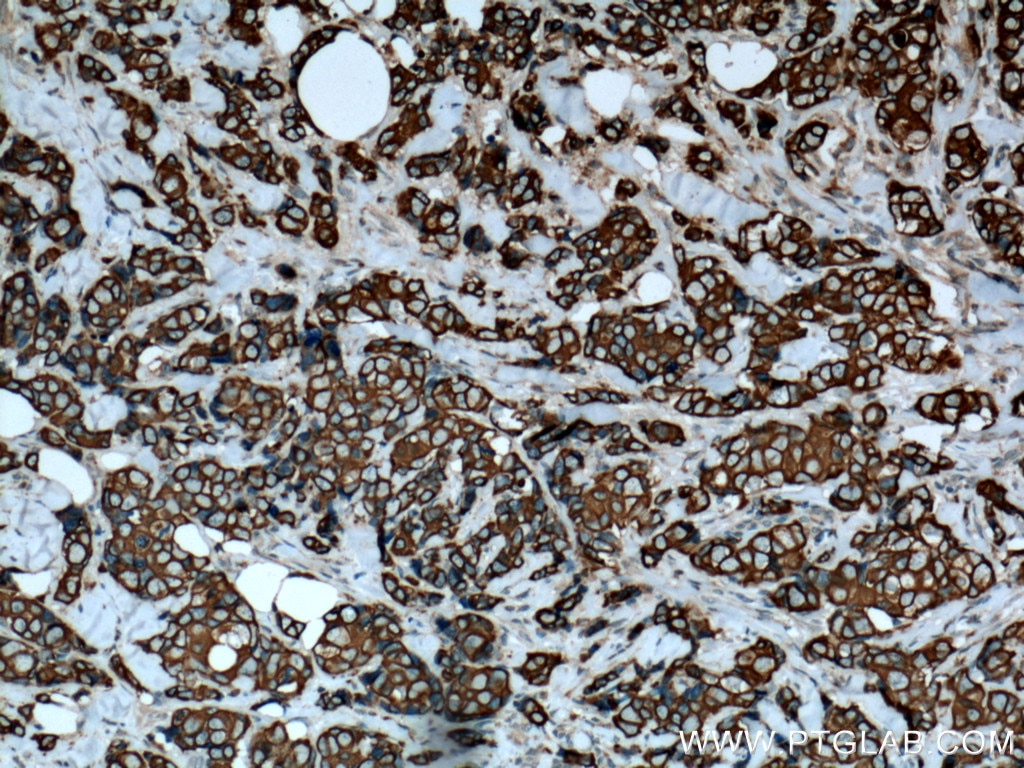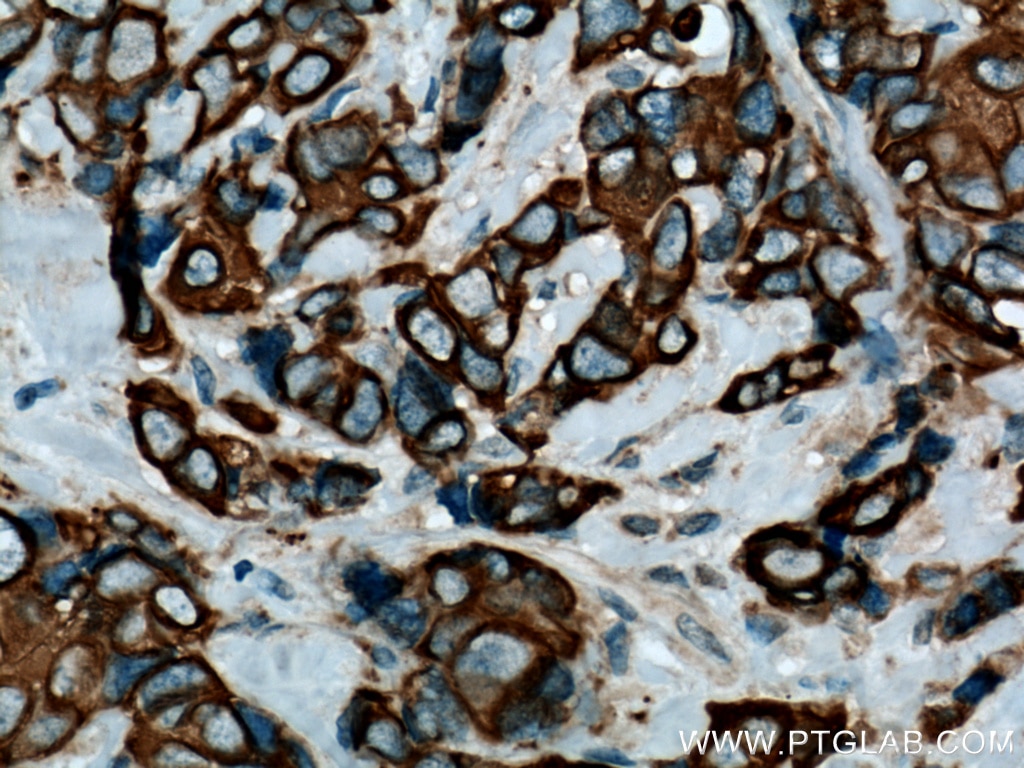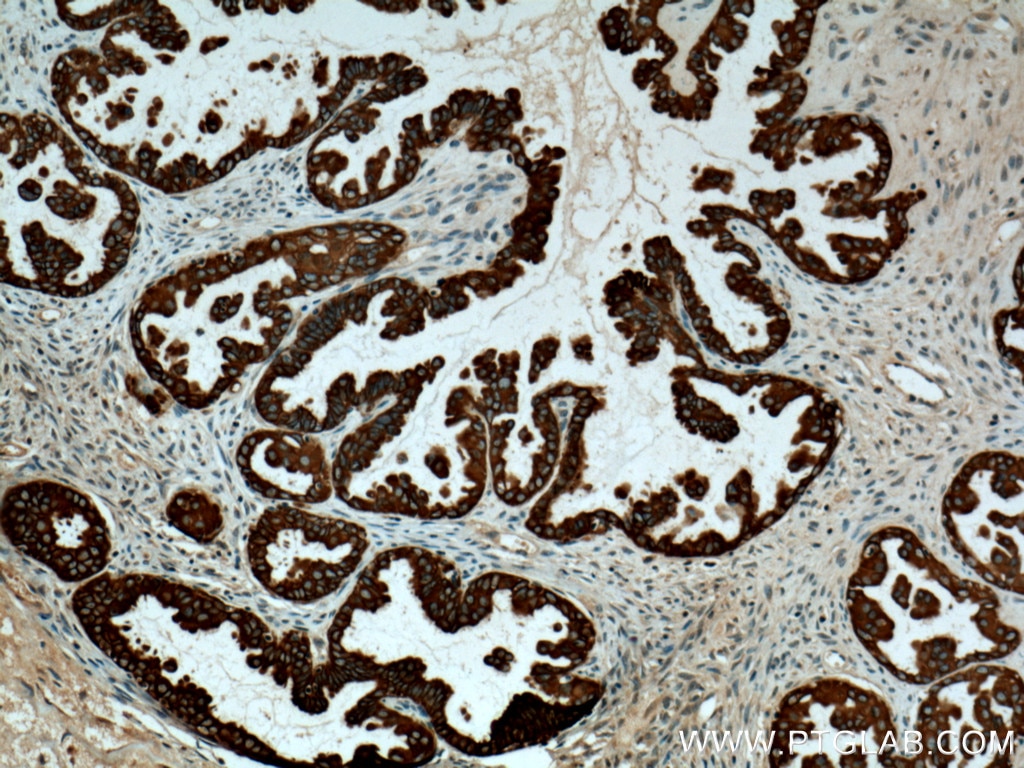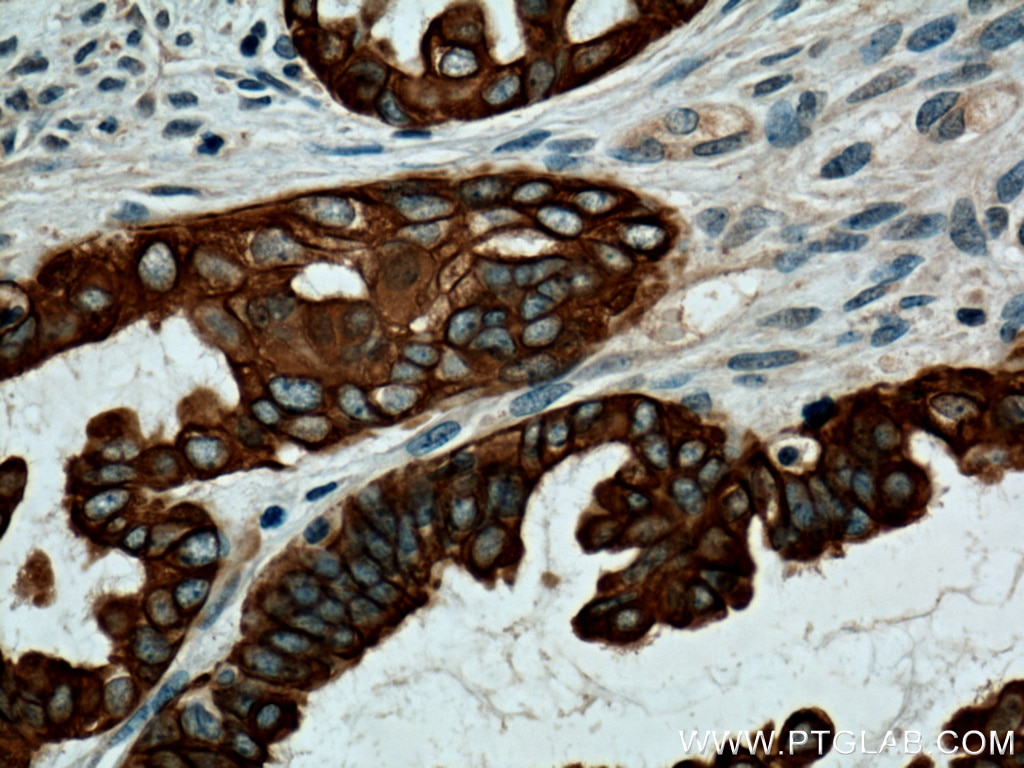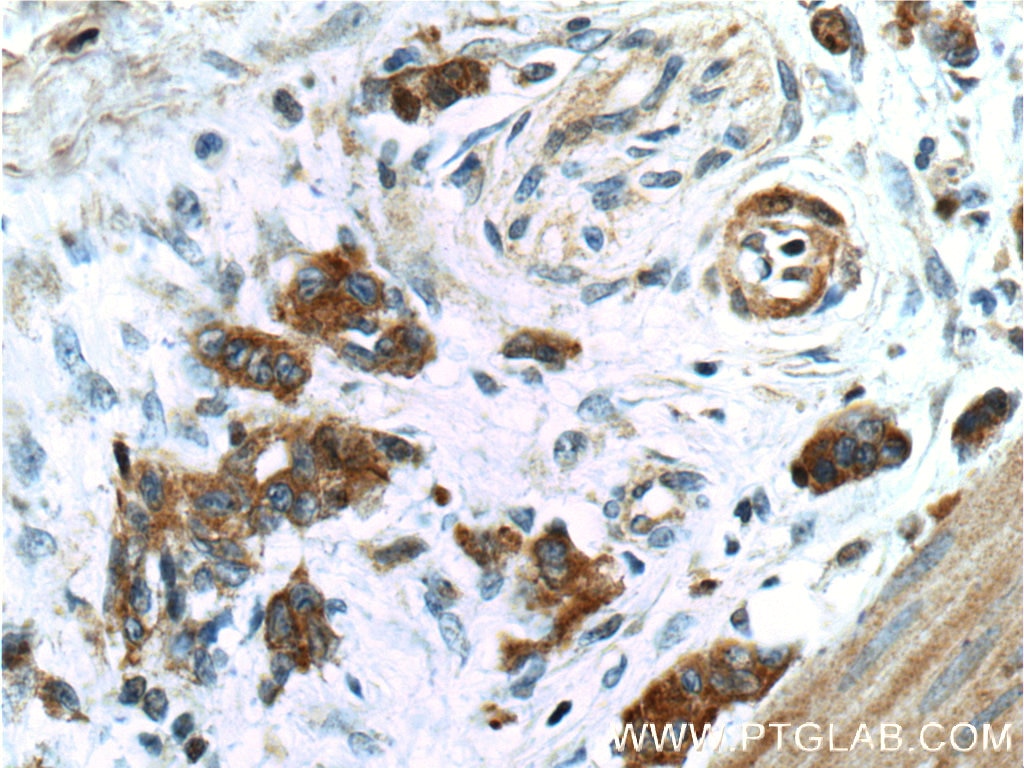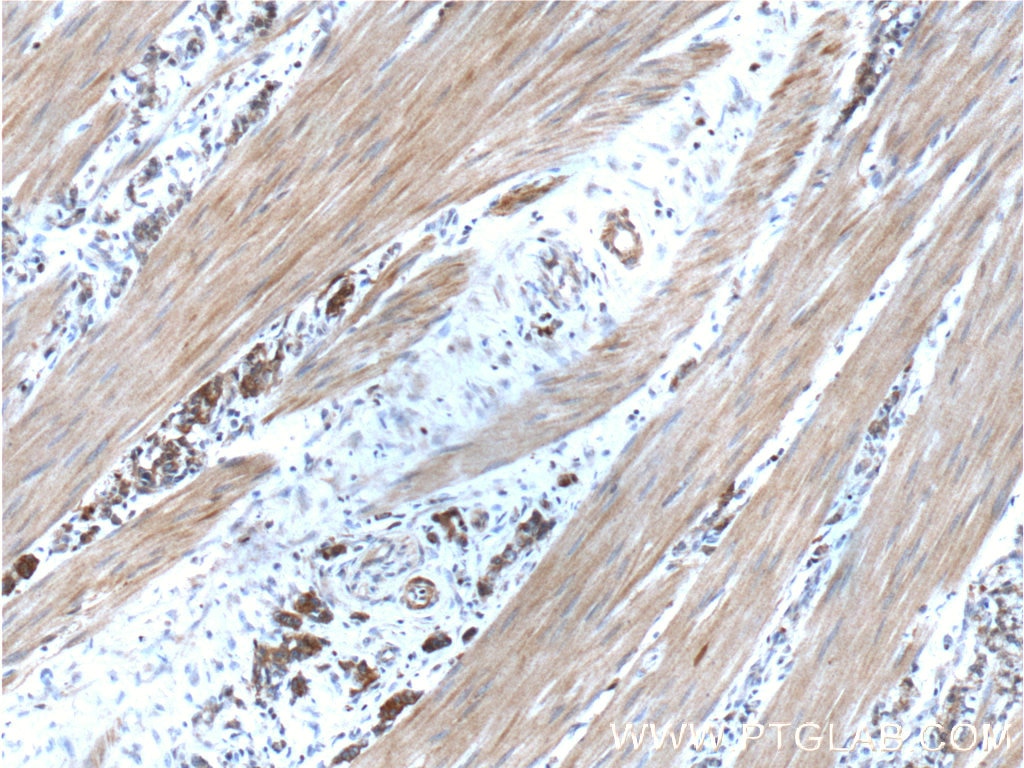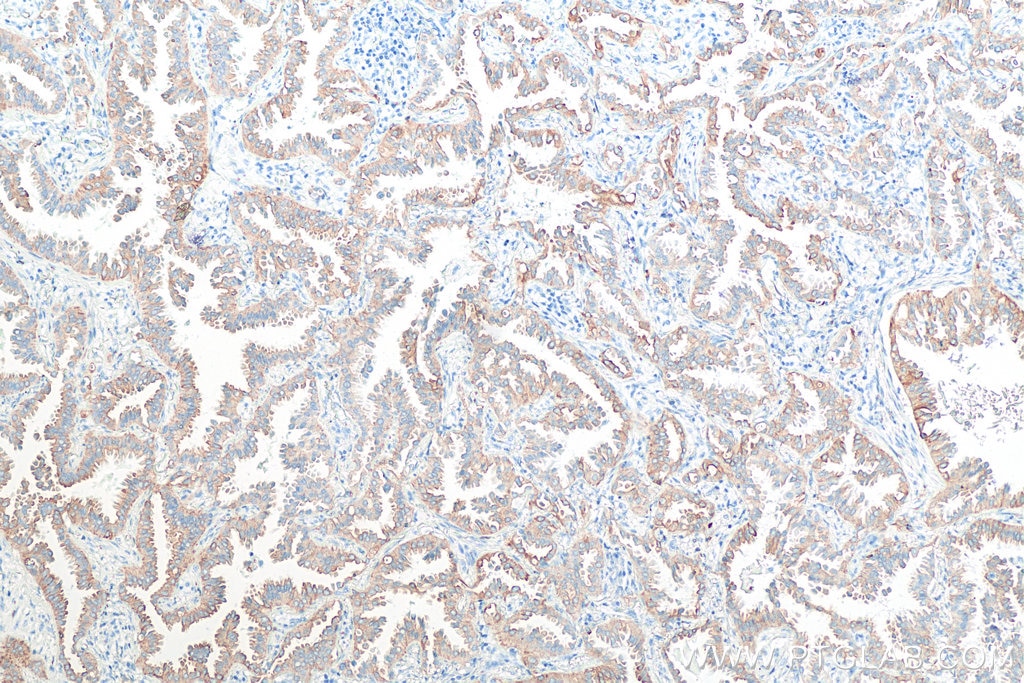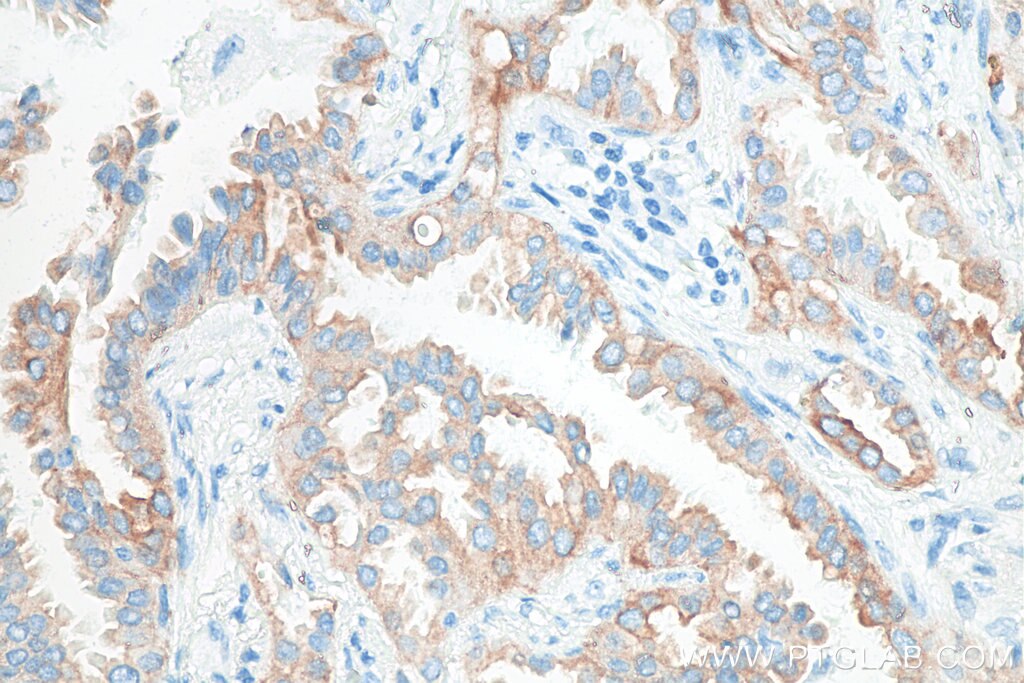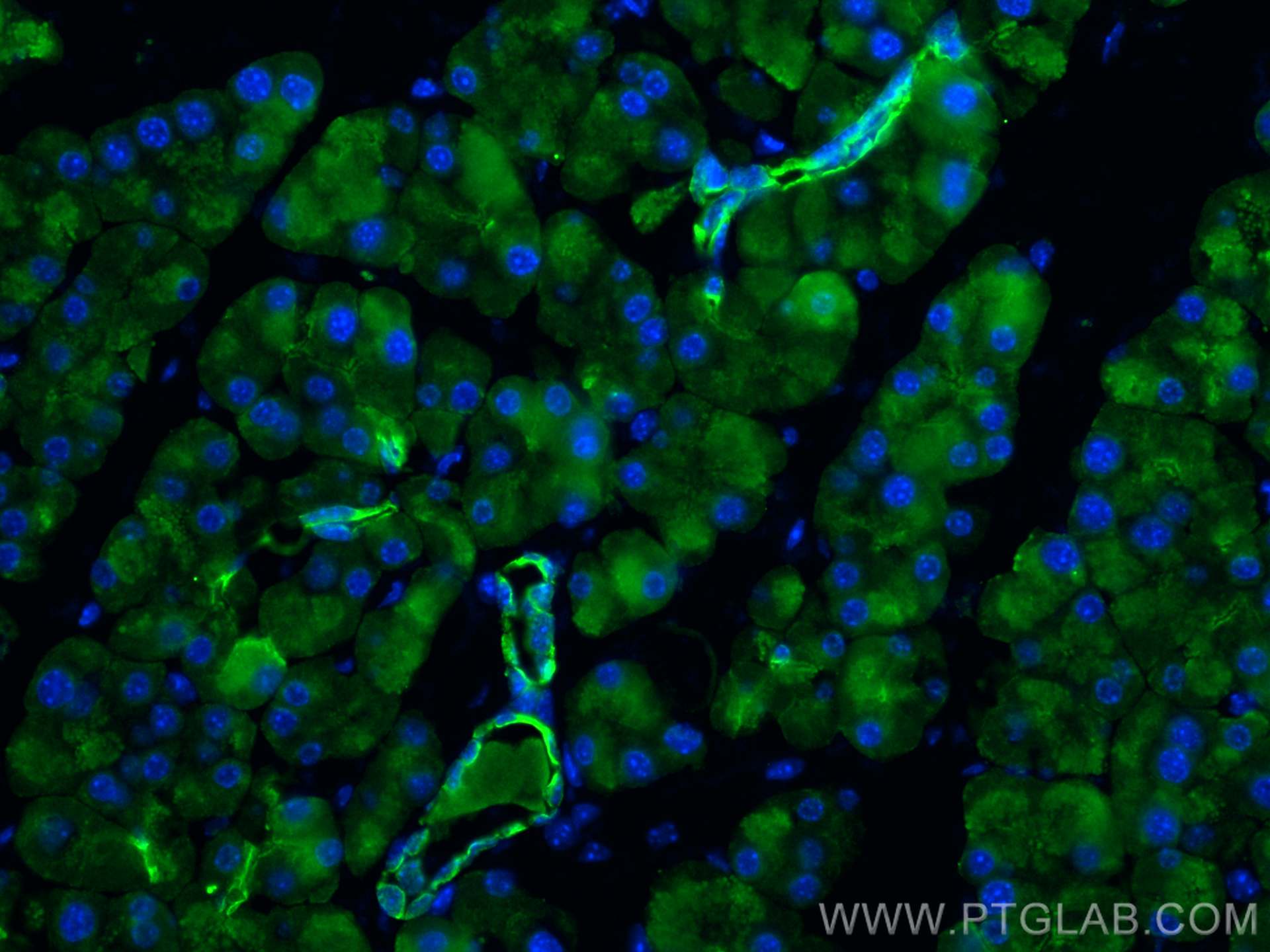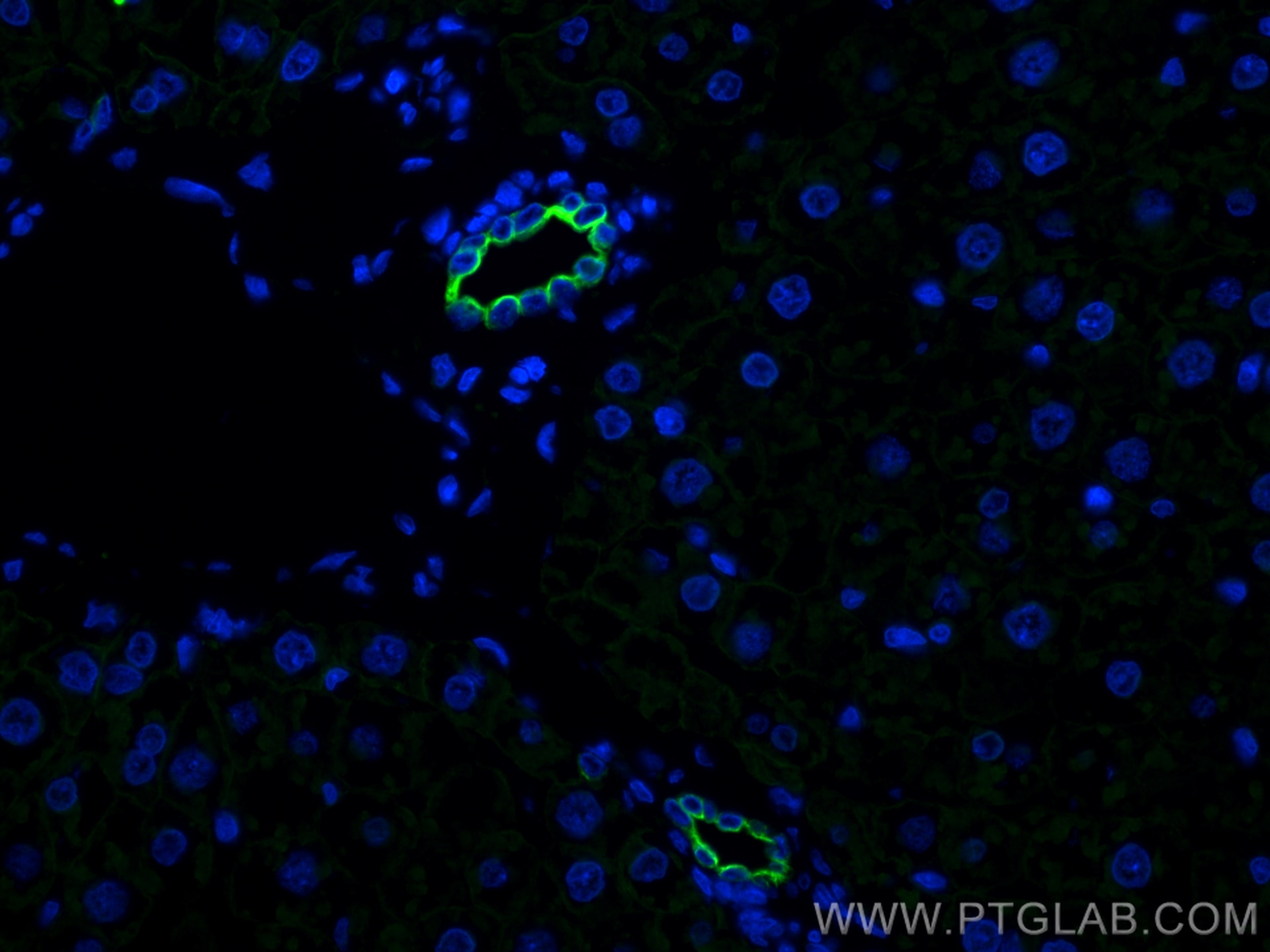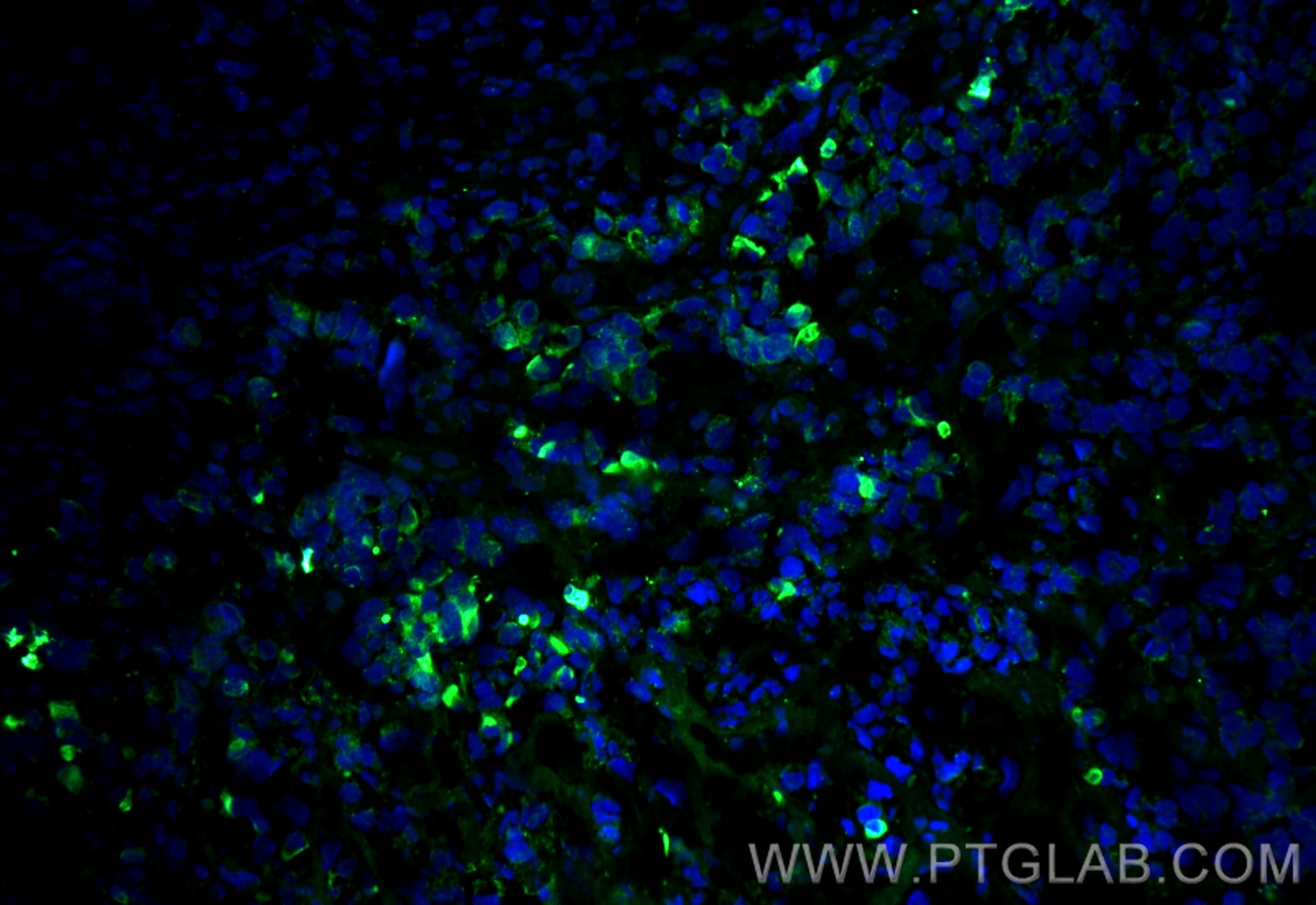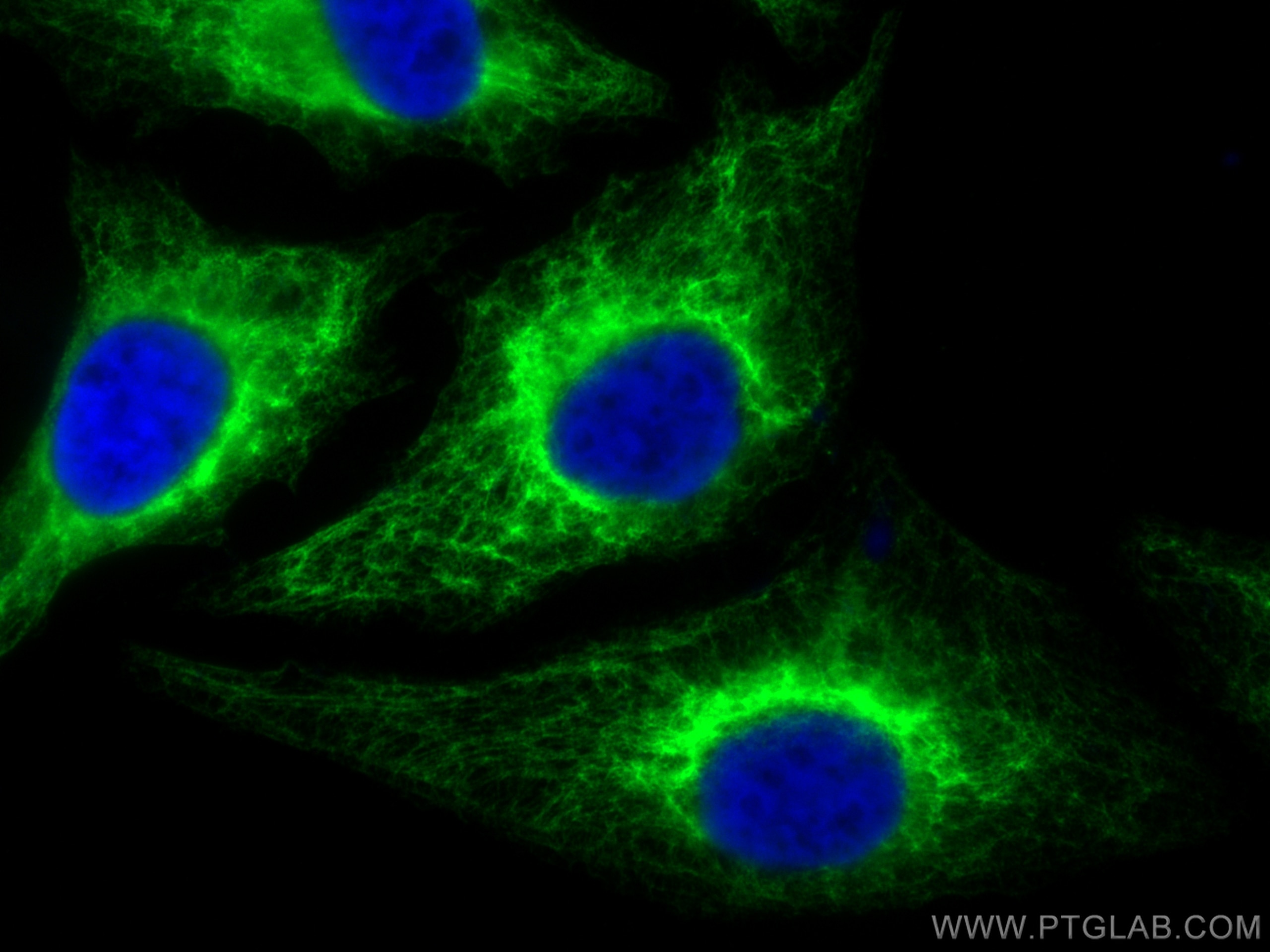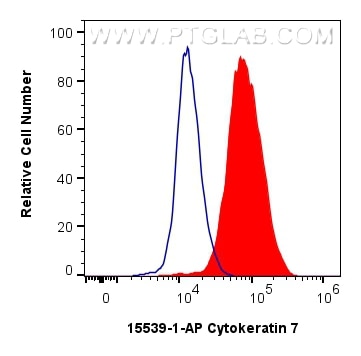Cytokeratin 7 Polyklonaler Antikörper
Cytokeratin 7 Polyklonal Antikörper für WB, IHC, IF/ICC, IF-P, IF-Fro, FC (Intra), ELISA
Wirt / Isotyp
Kaninchen / IgG
Getestete Reaktivität
human, Maus, Ratte
Anwendung
WB, IHC, IF/ICC, IF-P, IF-Fro, FC (Intra), ELISA
Konjugation
Unkonjugiert
Kat-Nr. : 15539-1-AP
Synonyme
Geprüfte Anwendungen
| Erfolgreiche Detektion in WB | HeLa-Zellen, A431-Zellen, HepG2-Zellen, Maus-Blasengewebe, Mauslebergewebe, Mauslungengewebe, Ratten-Blasengewebe, Rattenlebergewebe, Rattenlungengewebe |
| Erfolgreiche Detektion in IHC | humanes Pankreasgewebe, humanes Mammakarzinomgewebe, humanes Nierengewebe, humanes Lungenkarzinomgewebe, humanes Lungengewebe, humanes Ovarialkarzinomgewebe, humanes Magenkrebsgewebe, Mausnierengewebe, Maus-Pankreasgewebe, Rattennierengewebe Hinweis: Antigendemaskierung mit TE-Puffer pH 9,0 empfohlen. (*) Wahlweise kann die Antigendemaskierung auch mit Citratpuffer pH 6,0 erfolgen. |
| Erfolgreiche Detektion in IF-P | Maus-Pankreasgewebe, Rattenlebergewebe |
| Erfolgreiche Detektion in IF-Fro | mouse breast cancer |
| Erfolgreiche Detektion in IF/ICC | HeLa-Zellen |
| Erfolgreiche Detektion in FC (Intra) | HeLa-Zellen |
Empfohlene Verdünnung
| Anwendung | Verdünnung |
|---|---|
| Western Blot (WB) | WB : 1:5000-1:50000 |
| Immunhistochemie (IHC) | IHC : 1:1000-1:30000 |
| Immunfluoreszenz (IF)-P | IF-P : 1:50-1:500 |
| Immunfluoreszenz (IF)-FRO | IF-FRO : 1:50-1:500 |
| Immunfluoreszenz (IF)/ICC | IF/ICC : 1:50-1:500 |
| Durchflusszytometrie (FC) (INTRA) | FC (INTRA) : 0.80 ug per 10^6 cells in a 100 µl suspension |
| It is recommended that this reagent should be titrated in each testing system to obtain optimal results. | |
| Sample-dependent, check data in validation data gallery | |
Veröffentlichte Anwendungen
| WB | See 4 publications below |
| IHC | See 10 publications below |
| IF | See 16 publications below |
Produktinformation
15539-1-AP bindet in WB, IHC, IF/ICC, IF-P, IF-Fro, FC (Intra), ELISA Cytokeratin 7 und zeigt Reaktivität mit human, Maus, Ratten
| Getestete Reaktivität | human, Maus, Ratte |
| In Publikationen genannte Reaktivität | human, Maus, Ratte |
| Wirt / Isotyp | Kaninchen / IgG |
| Klonalität | Polyklonal |
| Typ | Antikörper |
| Immunogen | Cytokeratin 7 fusion protein Ag7895 |
| Vollständiger Name | keratin 7 |
| Berechnetes Molekulargewicht | 469 aa, 51 kDa |
| Beobachtetes Molekulargewicht | 51 kDa |
| GenBank-Zugangsnummer | BC002700 |
| Gene symbol | Cytokeratin 7 |
| Gene ID (NCBI) | 3855 |
| Konjugation | Unkonjugiert |
| Form | Liquid |
| Reinigungsmethode | Antigen-Affinitätsreinigung |
| Lagerungspuffer | PBS with 0.02% sodium azide and 50% glycerol |
| Lagerungsbedingungen | Bei -20°C lagern. Nach dem Versand ein Jahr lang stabil Aliquotieren ist bei -20oC Lagerung nicht notwendig. 20ul Größen enthalten 0,1% BSA. |
Hintergrundinformationen
Cytokeratin 7 (CK7) is a type II keratin protein that is a principal constituent of the intermediate filament cytoskeleton. It is primarily expressed in simple epithelia lining the cavities of internal organs, glandular ducts, and blood vessels. Abnormal expression of CK7 has been linked to various pathological conditions, including cancer. Overexpression of CK7 promotes tumor progression and metastasis in different human cancers, and its suppression leads to rapid tumor regression, highlighting its potential as a therapeutic target CK7 is also involved in inhibiting interferon-dependent interphase, promoting DNA synthesis, initiating translation possibly through interaction with p150 (the largest subunit of eukaryotic translation initiation factor 3), and interacting with G protein-coupled estrogen receptor 1 (GPER1), which activates several signaling pathways. In the context of cancer diagnosis, CK7 is used as a marker to distinguish between different types of carcinomas. It is expressed in most adenocarcinomas, particularly those of the lung and colorectal origin, and is useful in differentiating primary ovarian carcinoma from metastatic colorectal carcinoma. CK7 expression has also been studied as a predictor of an unfavorable prognosis in colorectal carcinoma.
Protokolle
| PRODUKTSPEZIFISCHE PROTOKOLLE | |
|---|---|
| WB protocol for Cytokeratin 7 antibody 15539-1-AP | Protokoll herunterladen |
| IHC protocol for Cytokeratin 7 antibody 15539-1-AP | Protokoll herunterladenl |
| IF protocol for Cytokeratin 7 antibody 15539-1-AP | Protokoll herunterladen |
| FC protocol for Cytokeratin 7 antibody 15539-1-AP | Download protocol |
| STANDARD-PROTOKOLLE | |
|---|---|
| Klicken Sie hier, um unsere Standardprotokolle anzuzeigen |
Publikationen
| Species | Application | Title |
|---|---|---|
Cancer Cell Promotion of cholangiocarcinoma growth by diverse cancer-associated fibroblast subpopulations. | ||
J Nanobiotechnology GelMA loaded with exosomes from human minor salivary gland organoids enhances wound healing by inducing macrophage polarization | ||
Cell Death Dis α1,3-fucosylation of MEST promotes invasion potential of cytotrophoblast cells by activating translation initiation | ||
Cell Death Dis LIF upregulates poFUT1 expression and promotes trophoblast cell migration and invasion at the fetal-maternal interface. |
